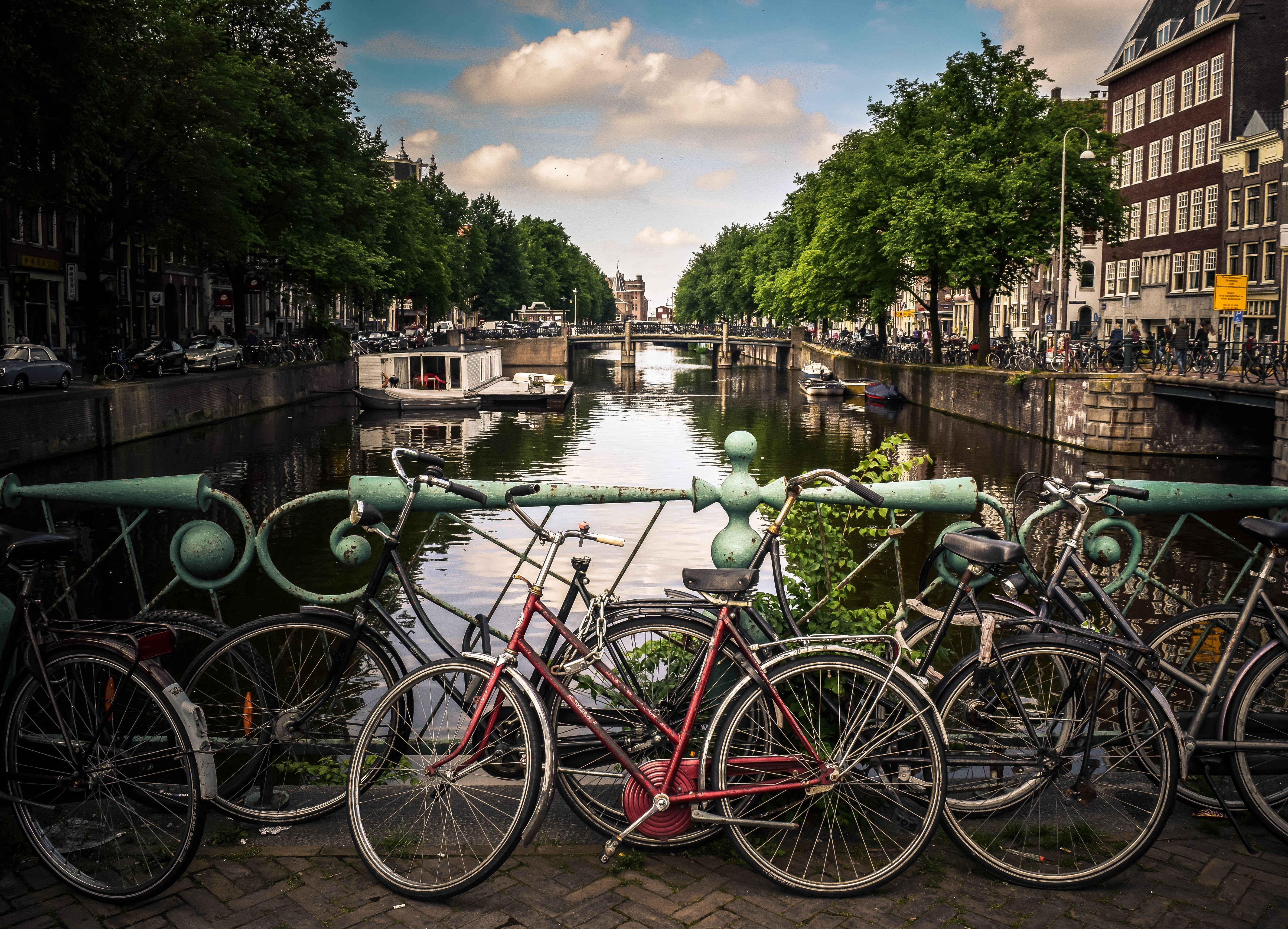
British Isles & Viking Shores
British Isles & Viking Shores
Cruise overview
WHY BOOK WITH US?
- ✔ The Deluxe Cruises’ team has extensive experience in ultra-luxury cruising.
- ✔ Call now to speak to our helpful and experienced Cruise Concierge team.
- ✔ Enjoy our Unique Deluxe Cruises Bonus for substantial savings.
- ✔ Our team will tailor your holiday to your exacting requirements.
- ✔ As agents, we work under the protection of each cruise lines ABTA / ATOL licences
About Tilbury
Just 22 nautical miles down river from the Tower Bridge in London, Tilbury is a popular turnaround port for cruises visiting Baltic and Northern European destinations.
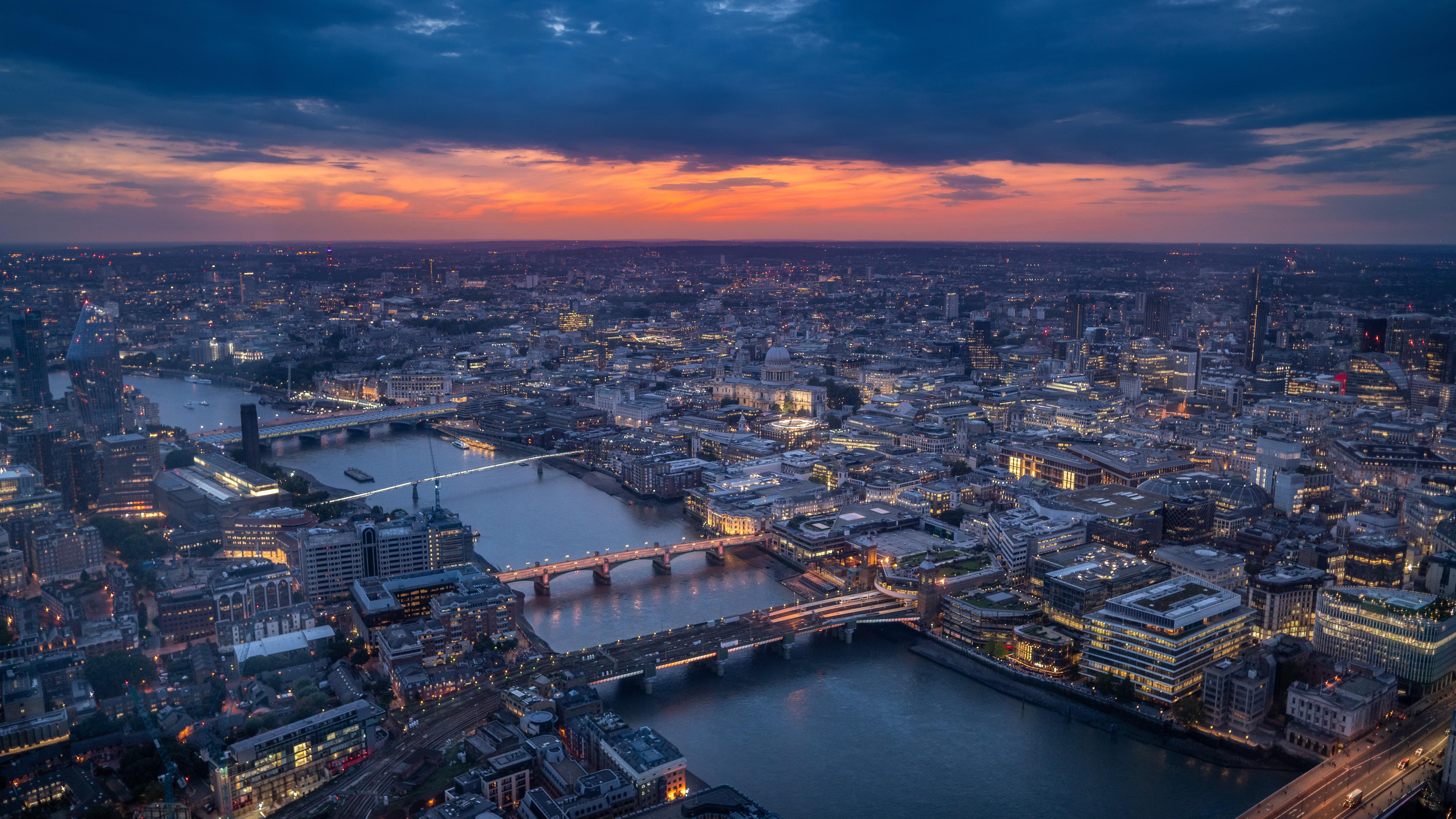
About Tilbury
Just 22 nautical miles down river from the Tower Bridge in London, Tilbury is a popular turnaround port for cruises visiting Baltic and Northern European destinations.

About Dover
Known as the gateway of England, Dover welcomes millions of visitors from all over the globe each year in its role as the ferry capital of the world and the second busiest cruise port in the UK. The White Cliffs Country has a rich heritage. Within the walls of the town’s iconic castle, over 2,000 years of history waits to be explored, whilst the town’s museum is home to the Dover Bronze Age Boat, the world’s oldest known seagoing vessel. The town’s cliffs that are a welcome sight for today's cross-channel travellers also served as the control centre for the Dunkirk evacuation in 1940.
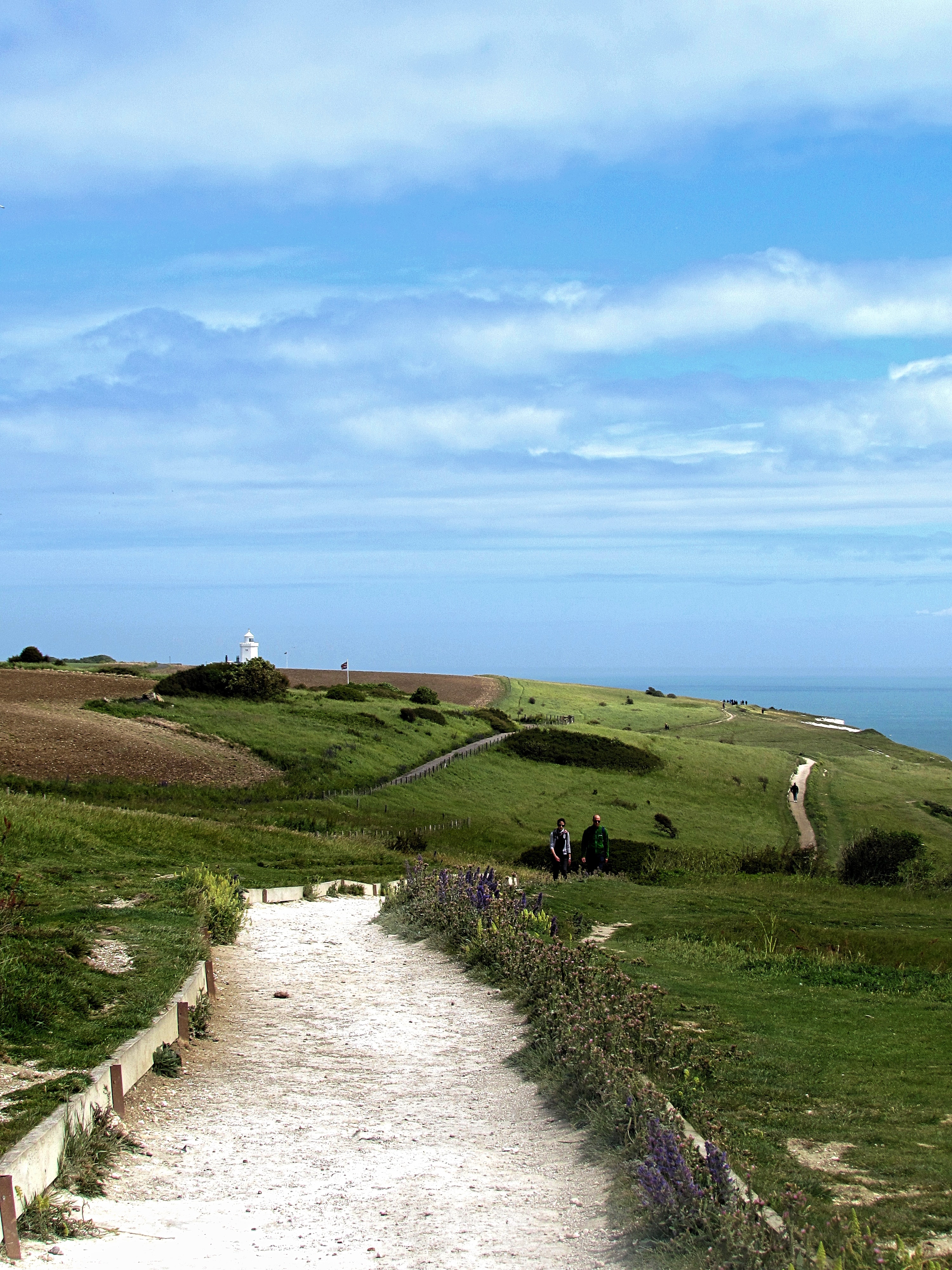
About Dun Laoghaire
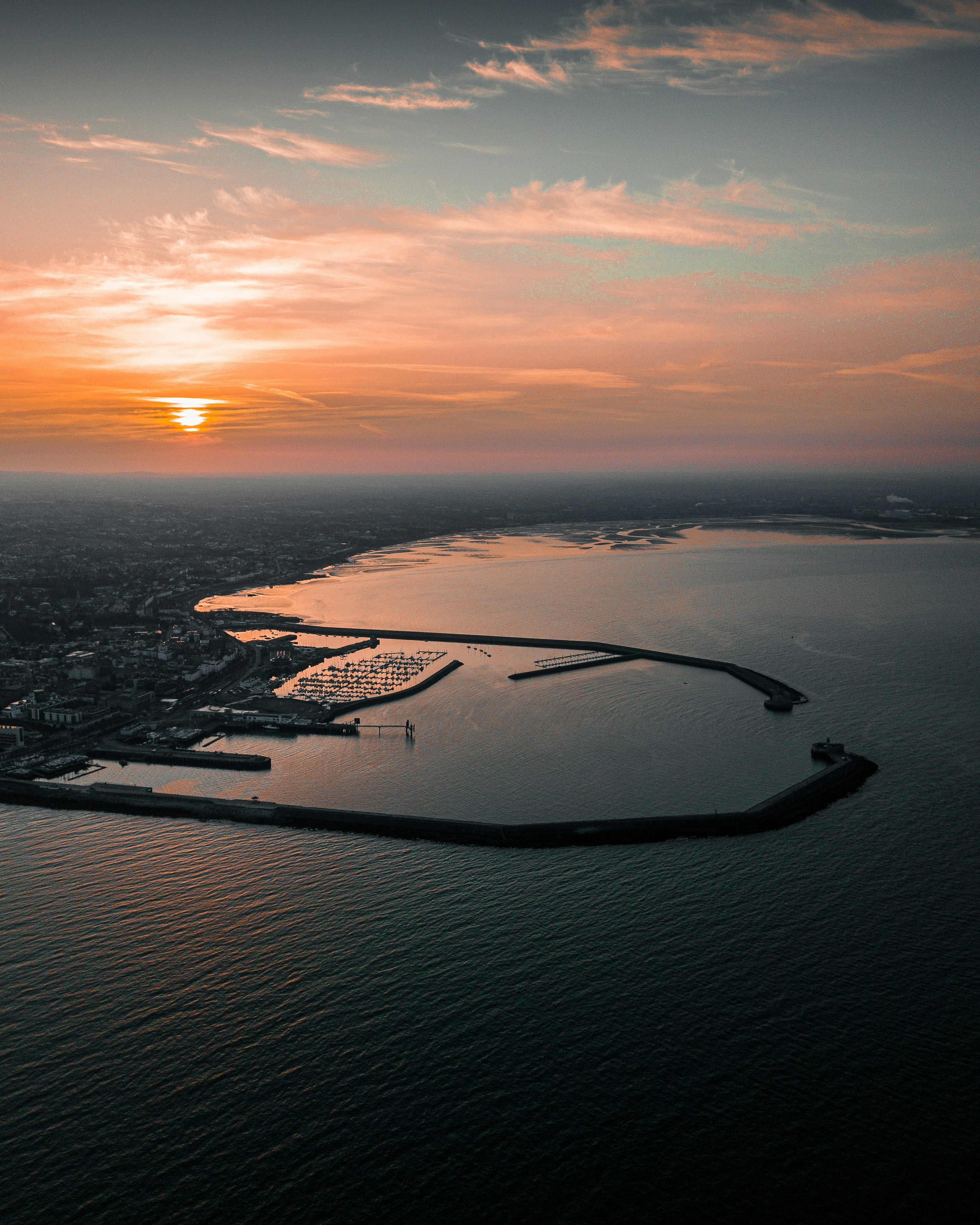
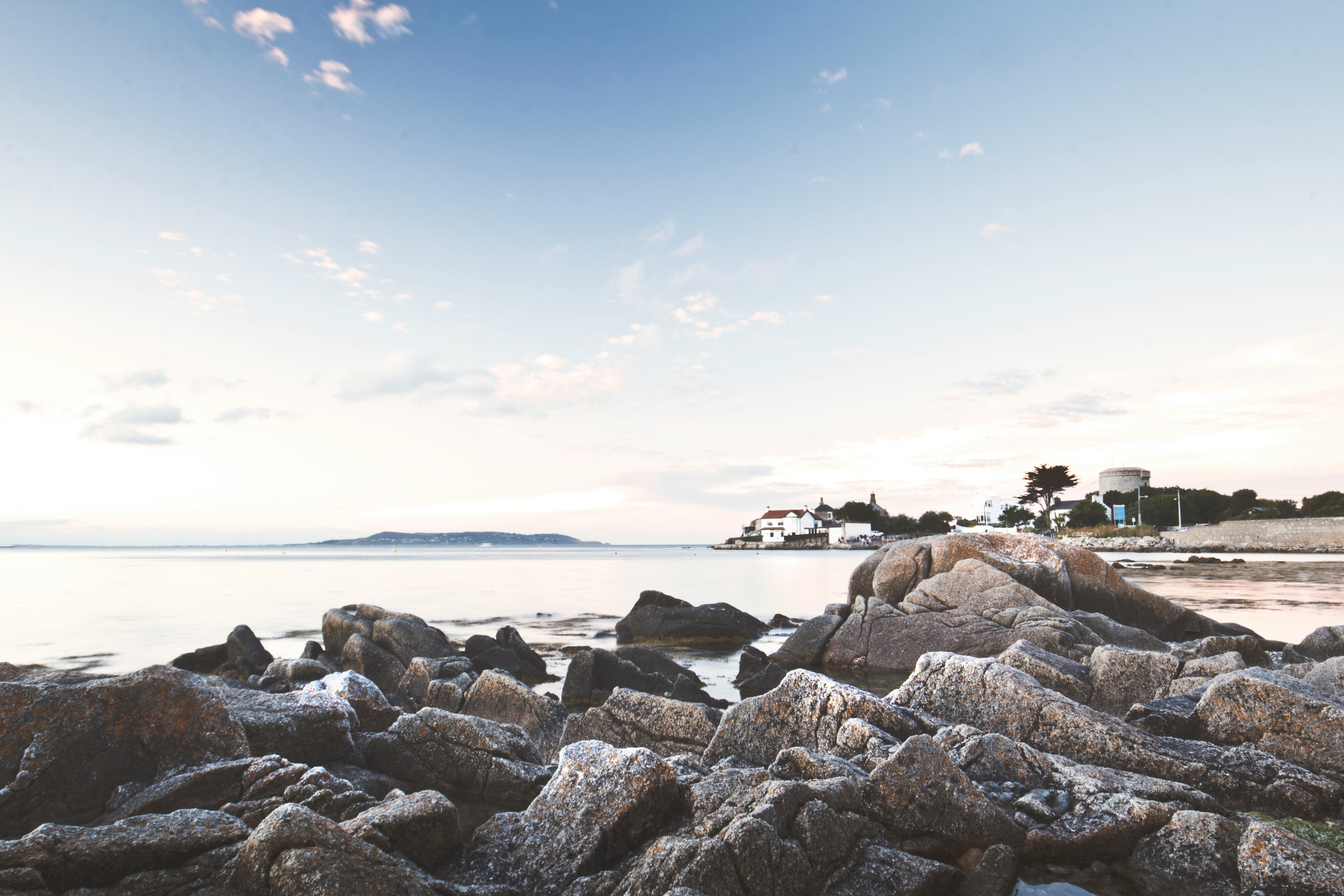
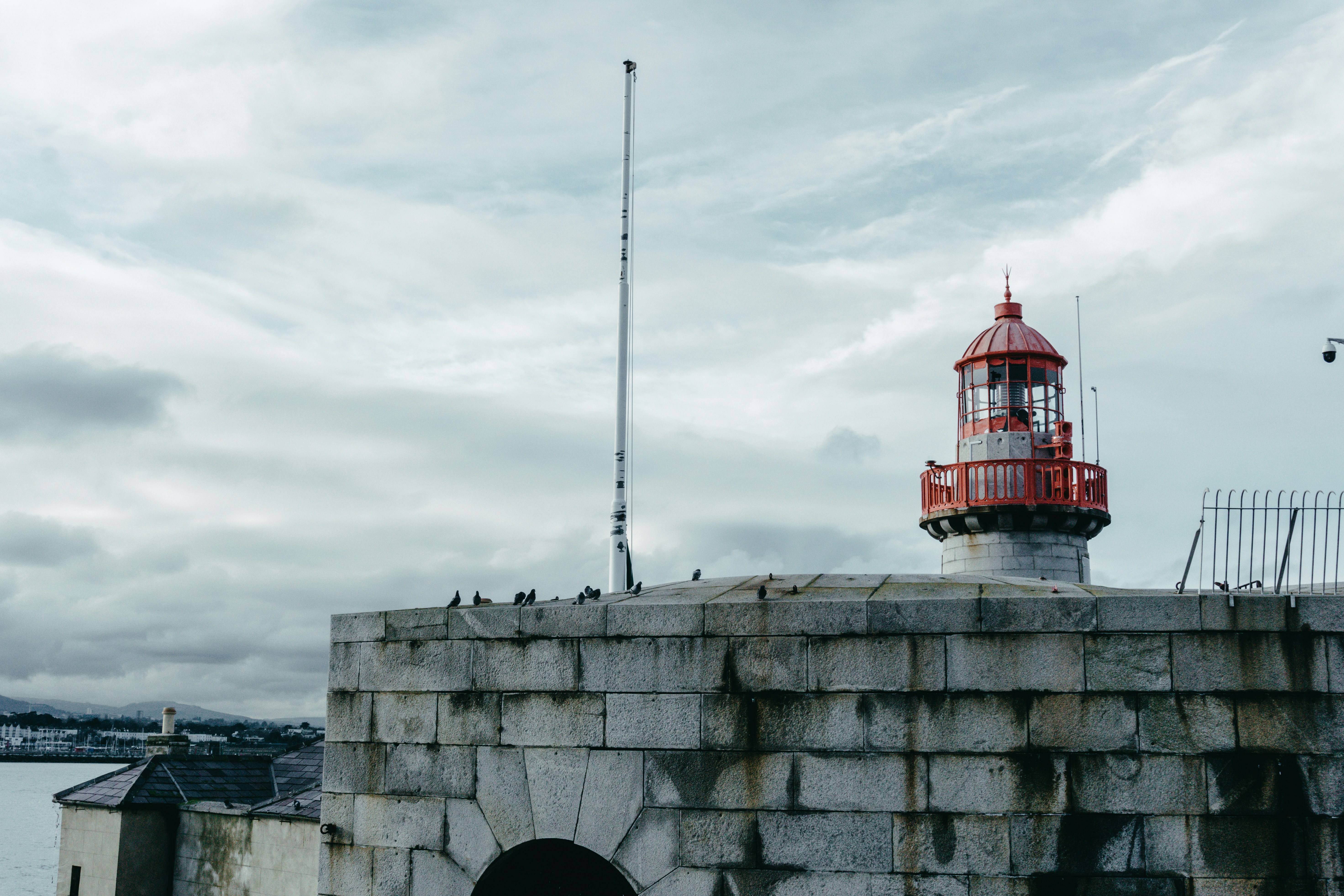
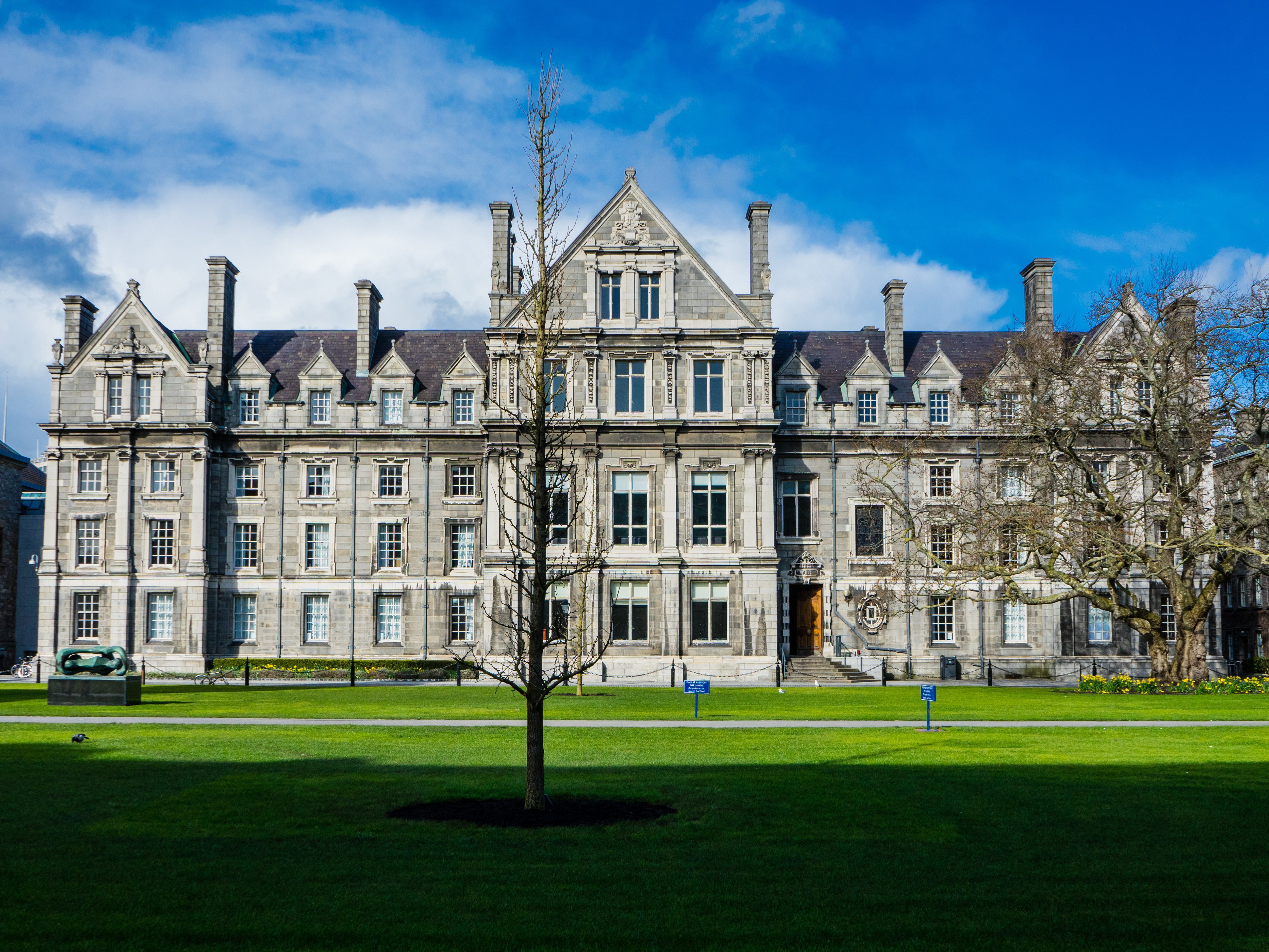
About Holyhead
Once a northern defense post against Irish raiders, Holyhead later became best known as a ferry port for Ireland. The dockside bustle is not matched by the town, however, which maintains just a small population. Nonetheless, thousands of years of settlement have given Holyhead rich historical ruins to explore, with more in the surrounding hiking friendly landscape.
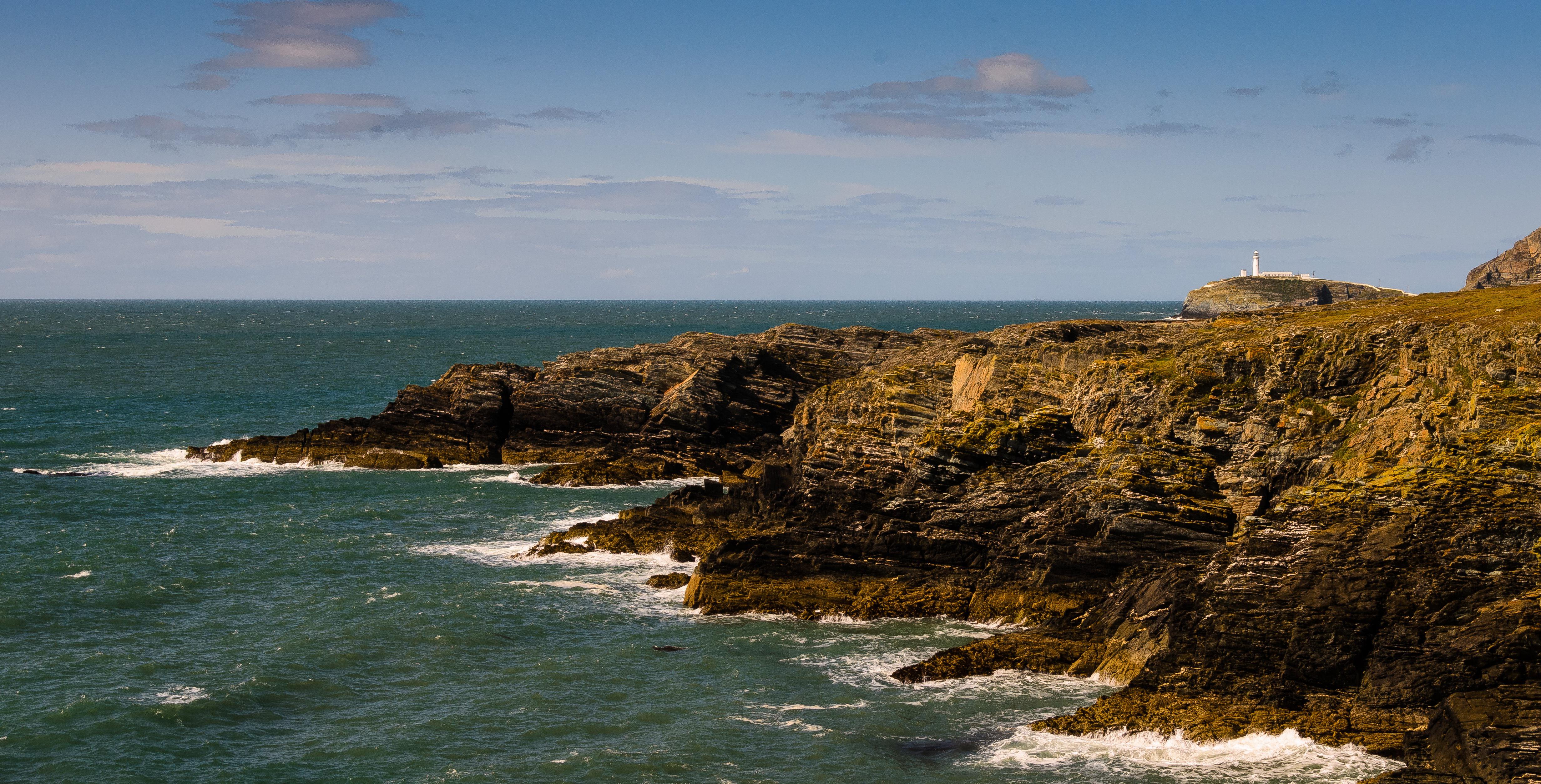
About Liverpool
From world-class attractions and sports to legendary music, Liverpool offers old-world charm with modern sophistication, underpinned by a rich cultural history.
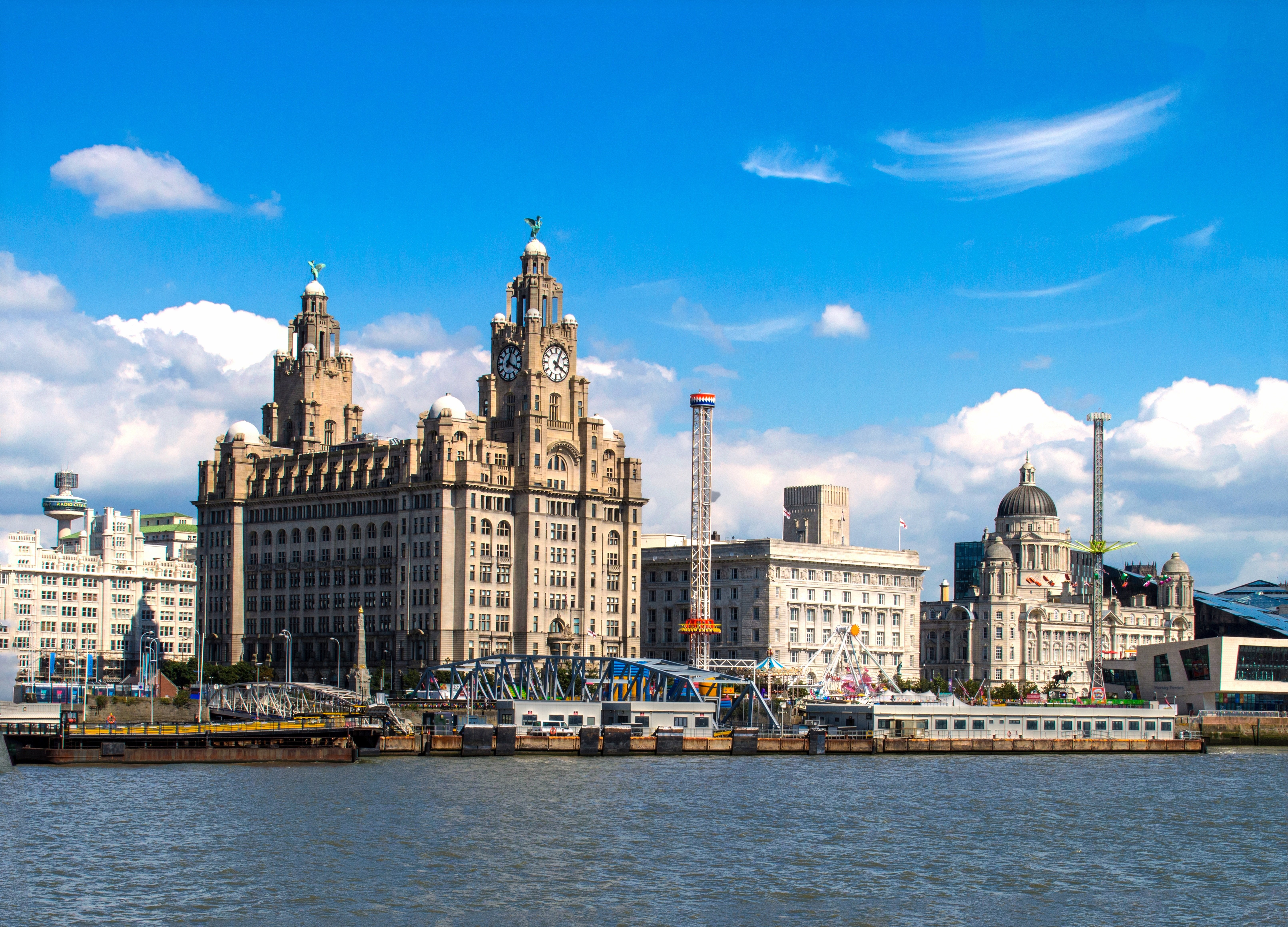
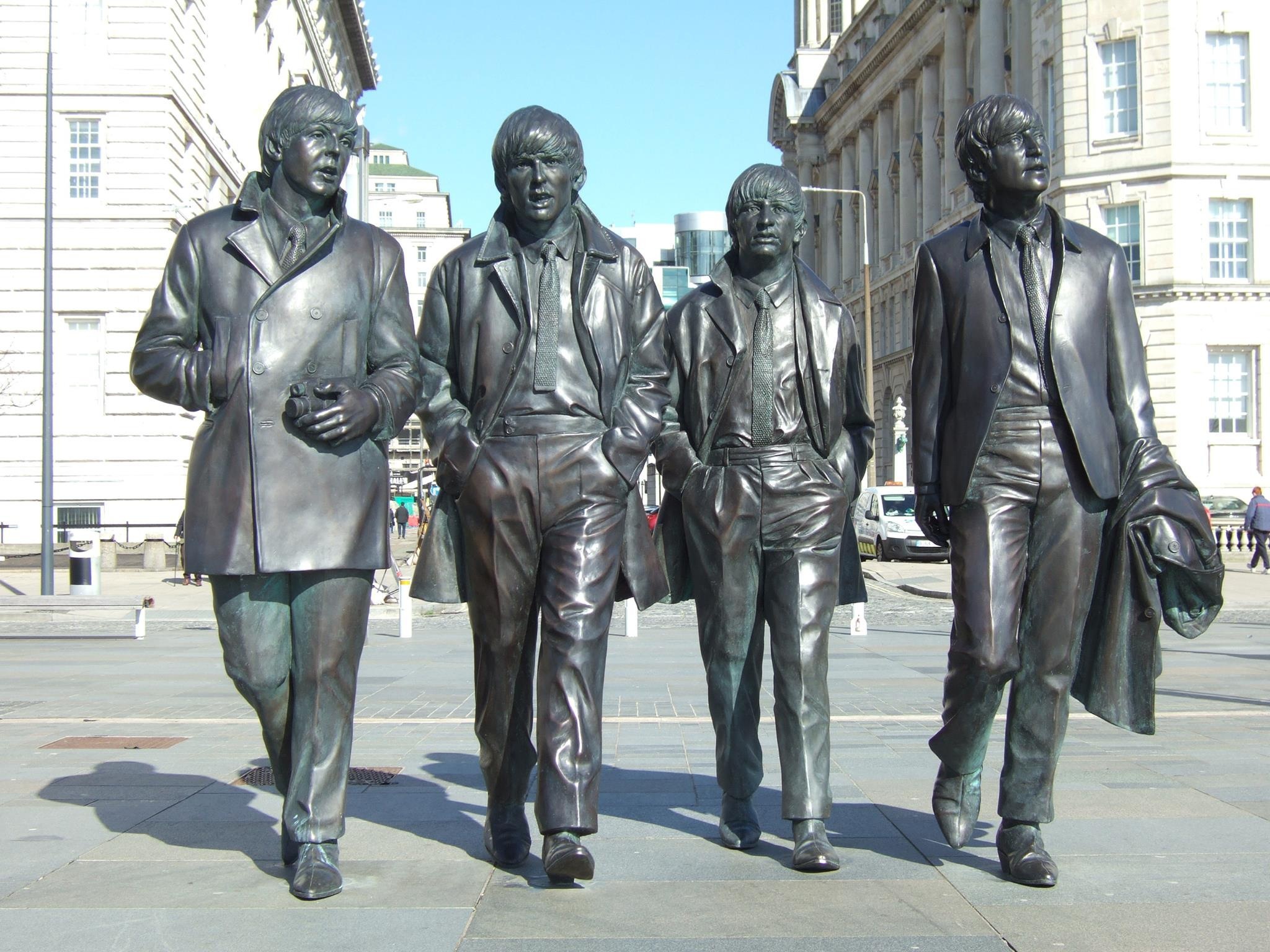
About Belfast
Before English and Scottish settlers arrived in the 1600s, Belfast was a tiny village called Béal Feirste ("sandbank ford") belonging to Ulster's ancient O'Neill clan. With the advent of the Plantation period (when settlers arrived in the 1600s), Sir Arthur Chichester, from Devon in southwestern England, received the city from the English Crown, and his son was made Earl of Donegall. Huguenots fleeing persecution from France settled near here, bringing their valuable linen-work skills. In the 18th century, Belfast underwent a phenomenal expansion—its population doubled every 10 years, despite an ever-present sectarian divide. Although the Anglican gentry despised the Presbyterian artisans—who, in turn, distrusted the native Catholics—Belfast's growth continued at a dizzying speed. The city was a great Victorian success story, an industrial boomtown whose prosperity was built on trade, especially linen and shipbuilding. Famously (or infamously), the Titanic was built here, giving Belfast, for a time, the nickname "Titanic Town." Having laid the foundation stone of the city's university in 1845, Queen Victoria returned to Belfast in 1849 (she is recalled in the names of buildings, streets, bars, monuments, and other places around the city), and in the same year, the university opened under the name Queen's College. Nearly 40 years later, in 1888, Victoria granted Belfast its city charter. Today its population is nearly 300,000, tourist numbers have increased, and this dramatically transformed city is enjoying an unparalleled renaissance.This is all a welcome change from the period when news about Belfast meant reports about "the Troubles." Since the 1994 ceasefire, Northern Ireland's capital city has benefited from major hotel investment, gentrified quaysides (or strands), a sophisticated new performing arts center, and major initiatives to boost tourism. Although the 1996 bombing of offices at Canary Wharf in London disrupted the 1994 peace agreement, the ceasefire was officially reestablished on July 20, 1997, and this embattled city began its quest for a newfound identity.Since 2008, the city has restored all its major public buildings such as museums, churches, theaters, City Hall, Ulster Hall—and even the glorious Crown Bar—spending millions of pounds on its built heritage. A gaol that at the height of the Troubles held some of the most notorious murderers involved in paramilitary violence is now a major visitor attraction.Belfast's city center is made up of three roughly contiguous areas that are easy to navigate on foot. From the south end to the north, it's about an hour's leisurely walk.
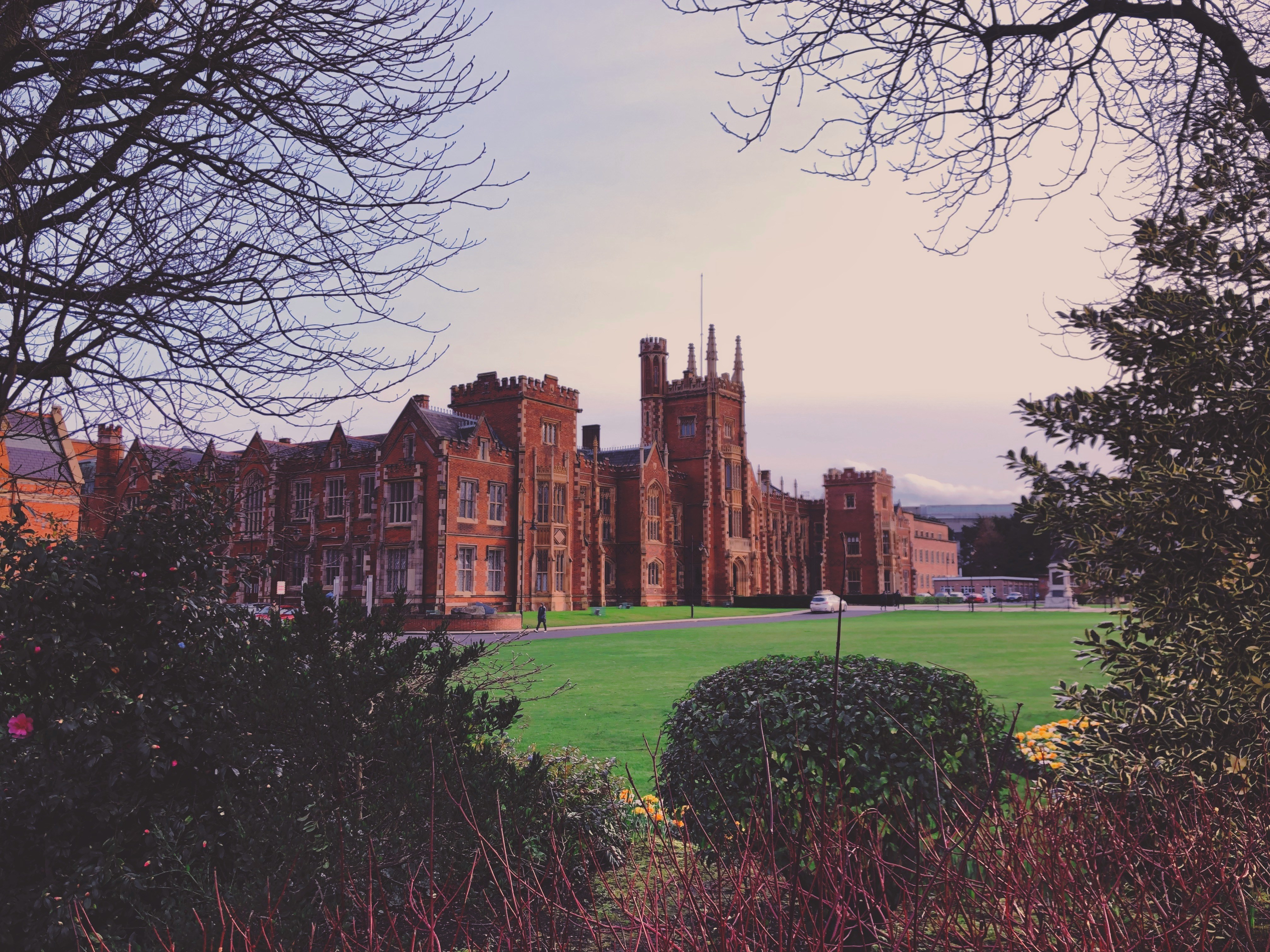
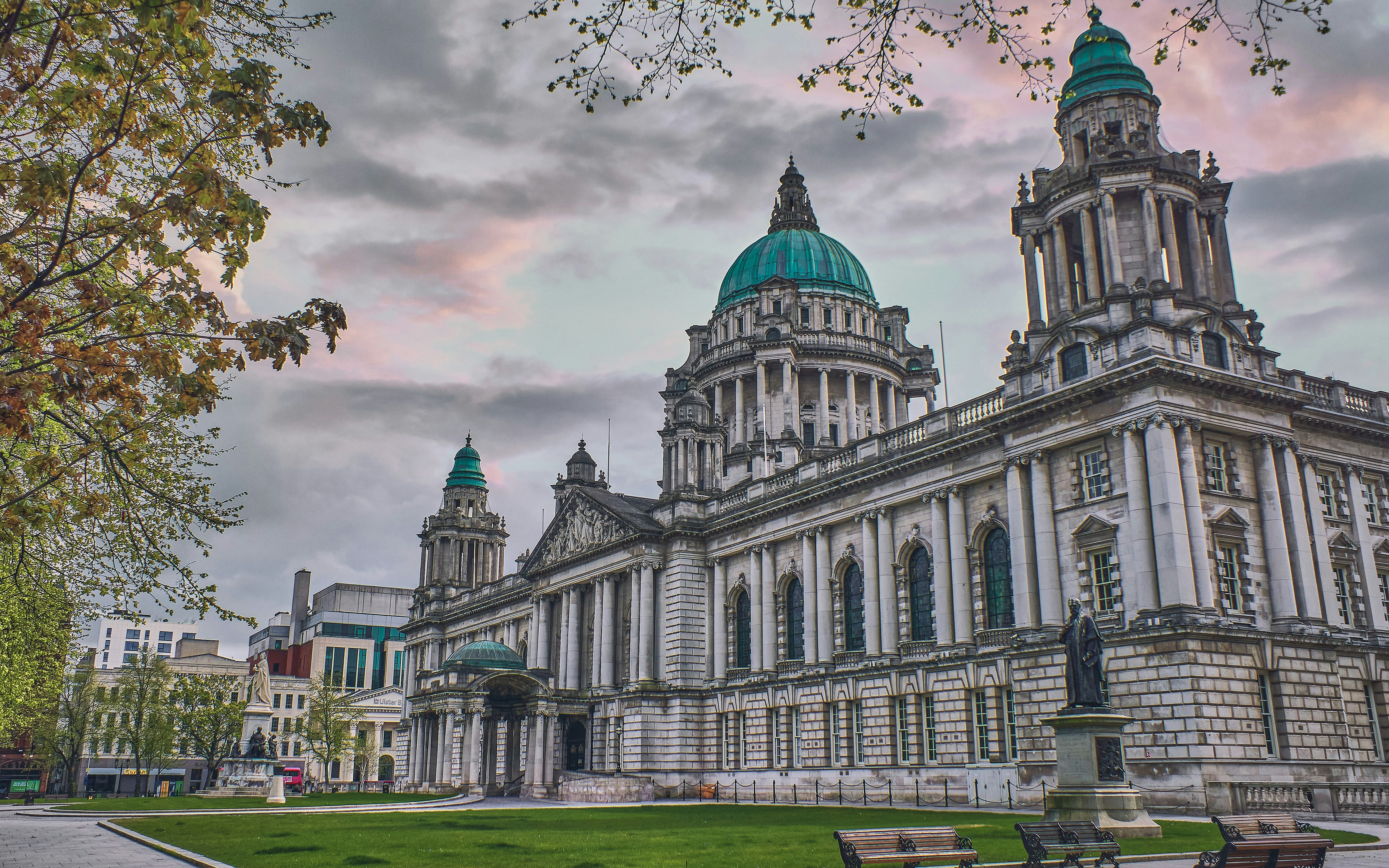
About Ullapool
Ullapool is an ideal base for hiking throughout Sutherland and taking wildlife and nature cruises, especially to the Summer Isles. By the shores of salty Loch Broom, the town was founded in 1788 as a fishing station to exploit the local herring stocks. There's still a smattering of fishing vessels, as well as visiting yachts and foreign ships. When their crews fill the pubs, Ullapool has a cosmopolitan feel. The harbor area comes to life when the Lewis ferry arrives and departs.
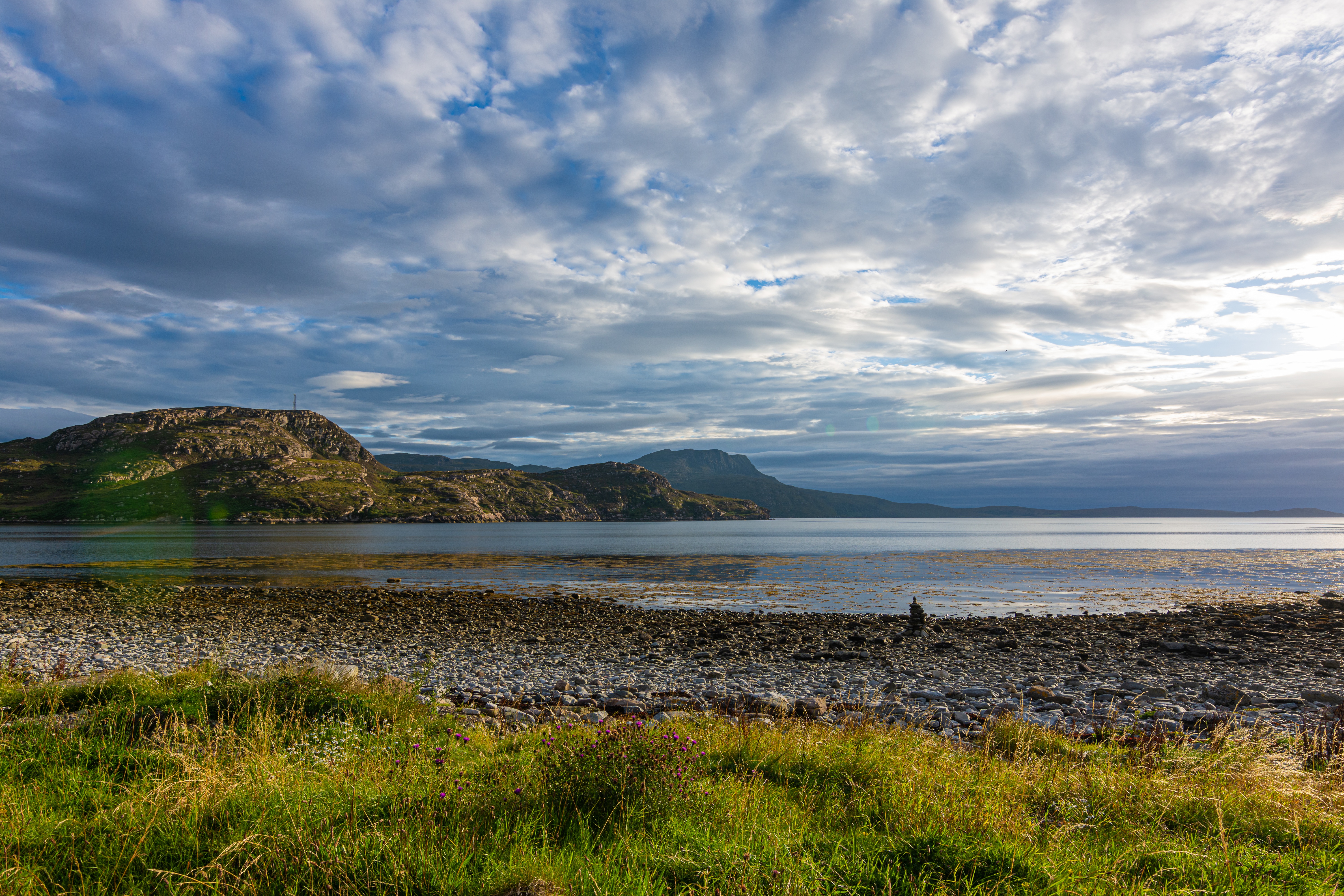
About Kirkwall, Orkney Islands
In bustling Kirkwall, the main town on Orkney, there's plenty to see in the narrow, winding streets extending from the harbor. The cathedral and some museums are highlights.
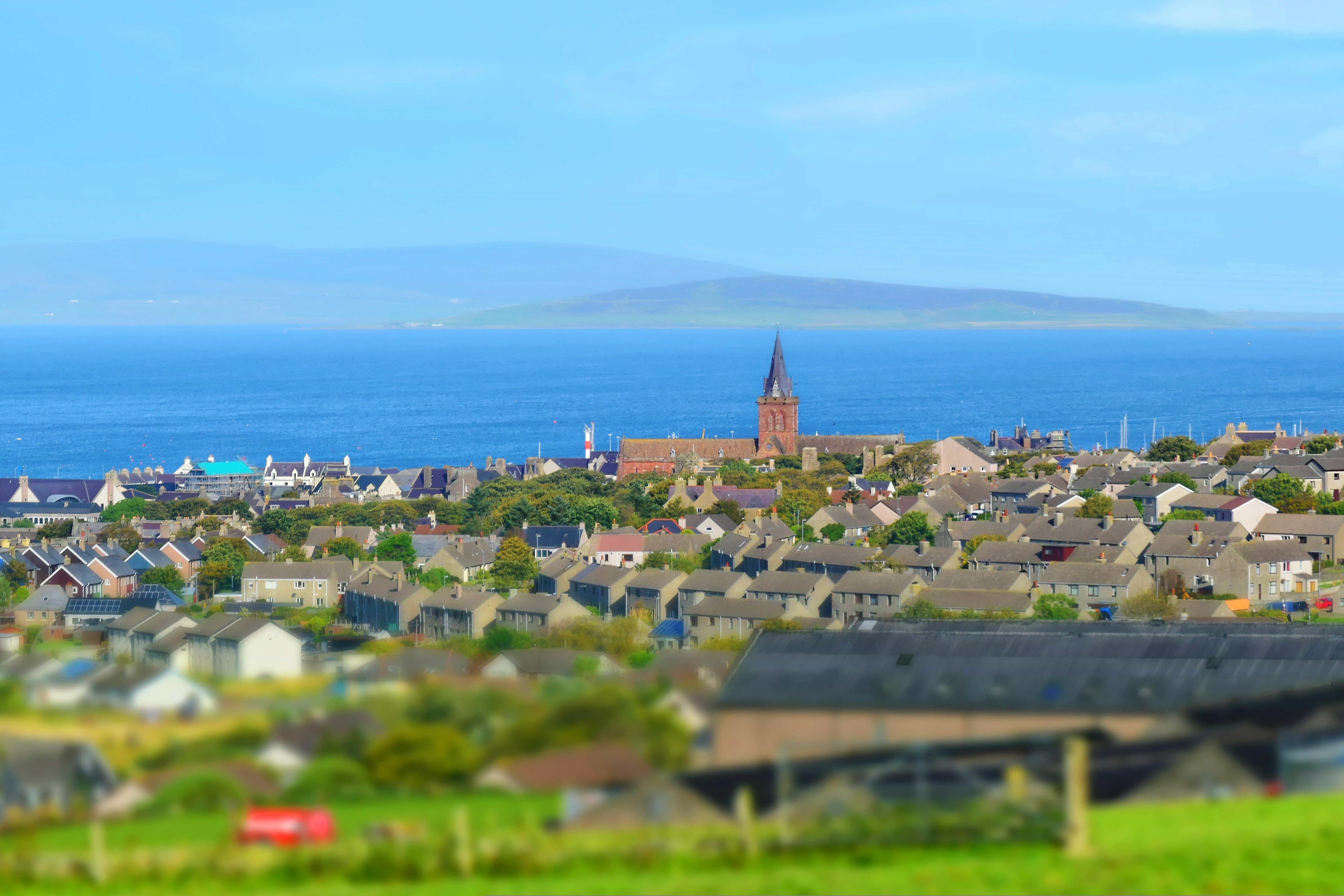
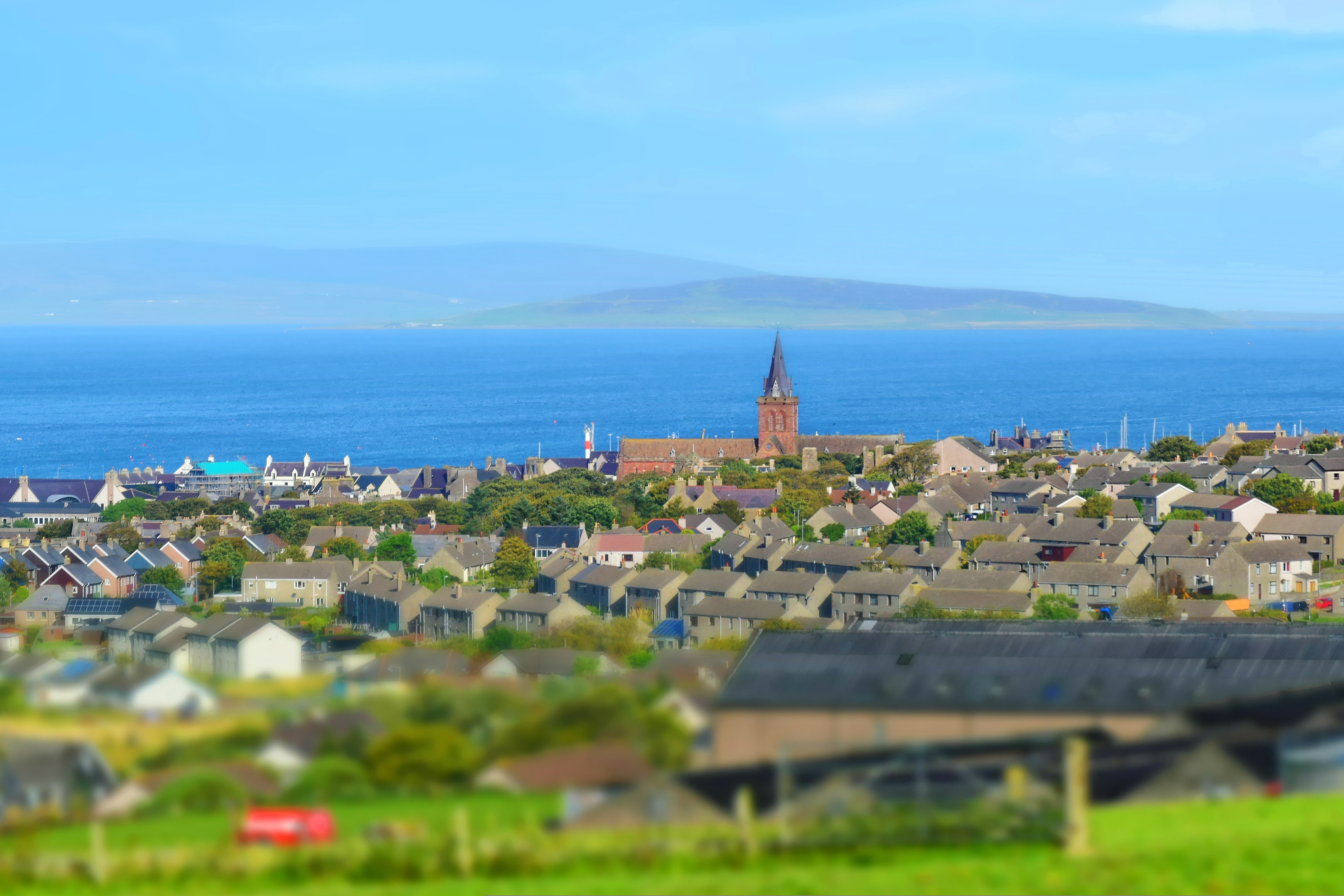
About Newhaven/Edinburgh
Newhaven is a district in the City of Edinburgh, Scotland, between Leith and Granton and about 2 miles north of the city centre, just north of the Victoria Park district. Formerly a village and harbour on the Firth of Forth.
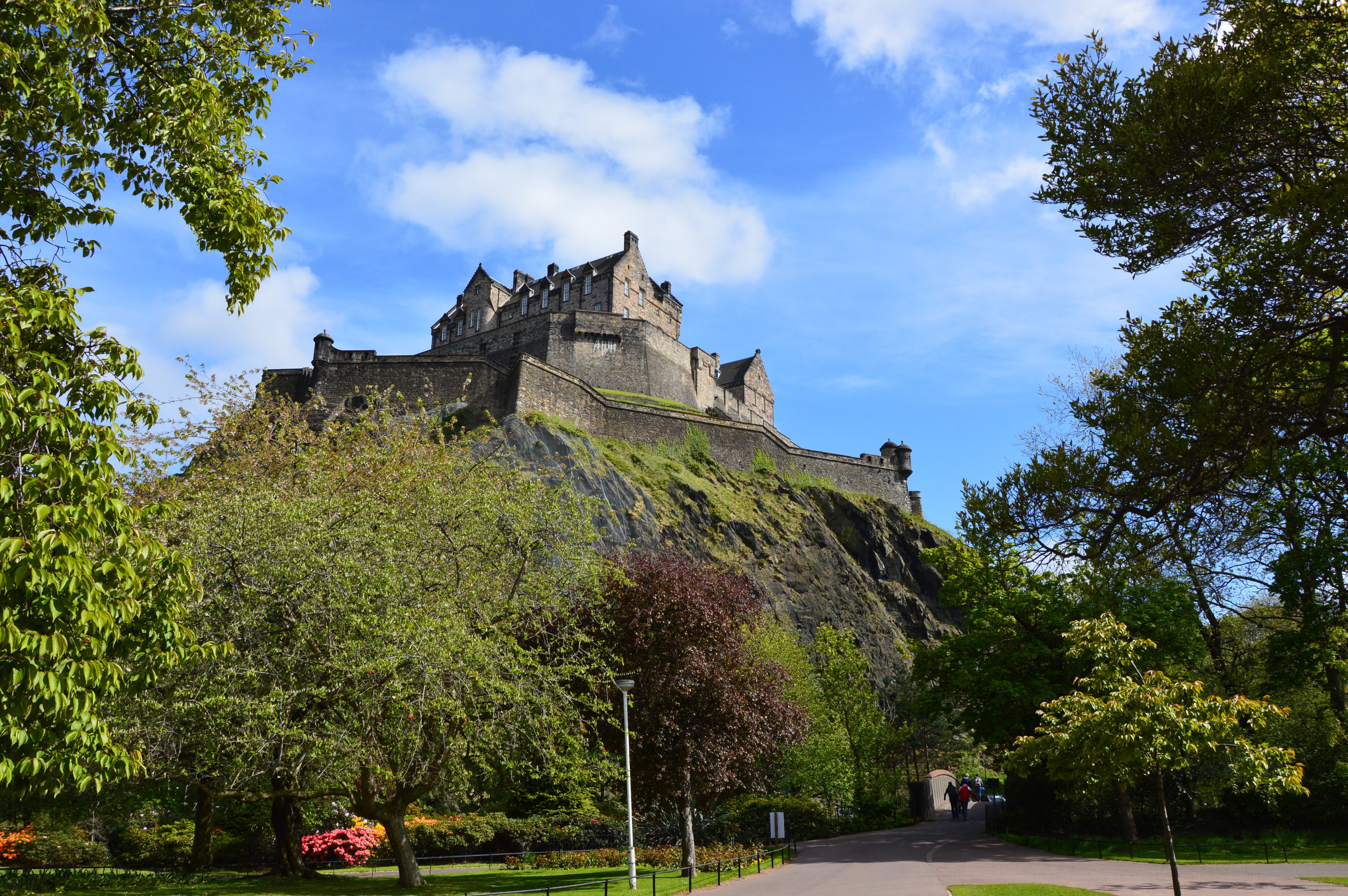
About Aberdeen
With close to 220,000 inhabitants, Aberdeen is Scotland's third most populous city. Locally quarried grey granite was used during the mid-18th to mid-20th centuries for many of Aberdeen's buildings, and hence the nicknames it has earned as the Granite City, or the Grey City. Aberdeen granite was also used to build the terraces of the Houses of Parliament and Waterloo Bridge in London. Since the discovery of North Sea oil in the 1970s, Aberdeen has also been called the Oil Capital of Europe or the Energy Capital of Europe. It is no wonder that because of the oil fields in the North Sea, Aberdeen's seaport is very important. The Heliport with its flights to the oil fields is one of the busiest commercial heliports in the world.
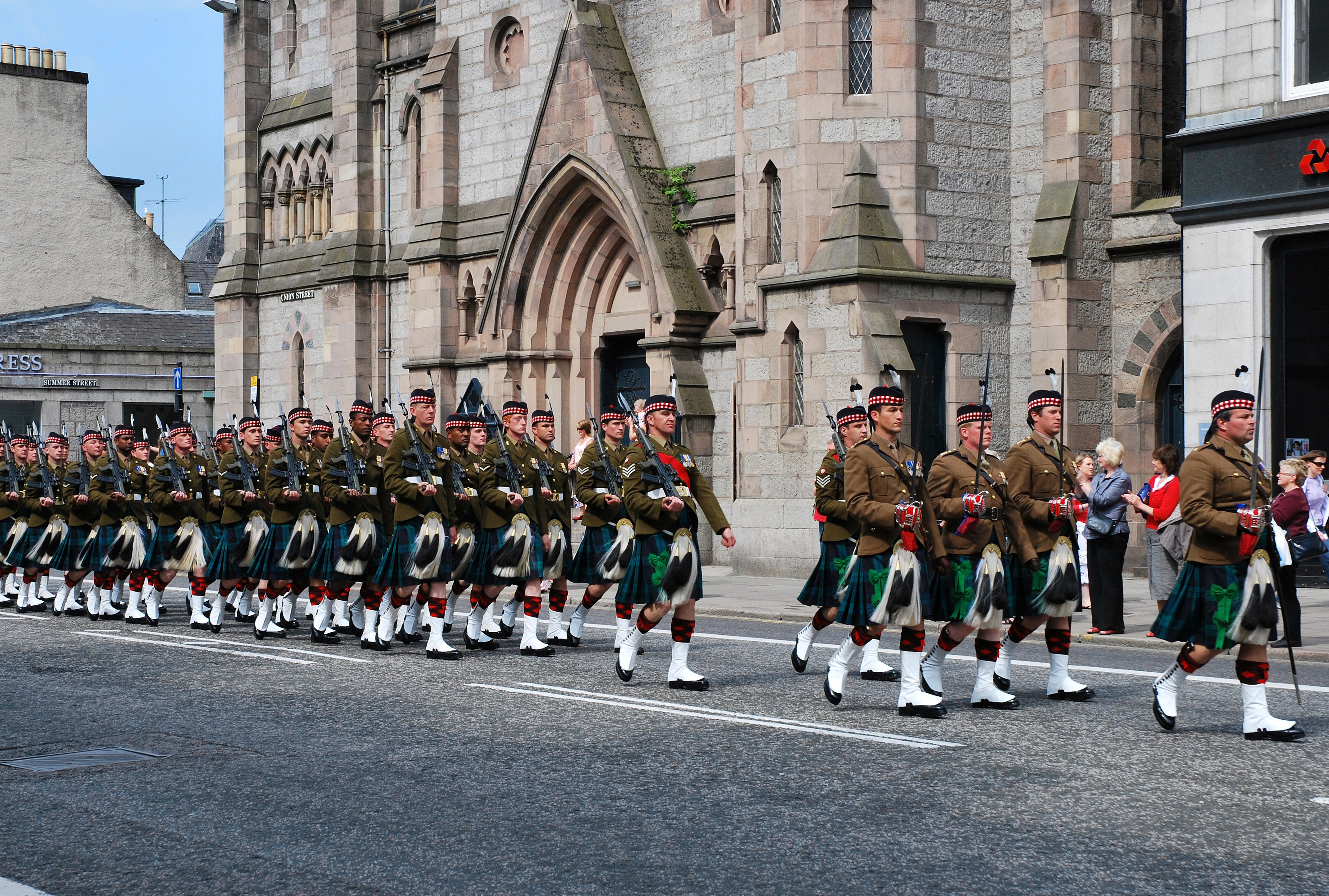
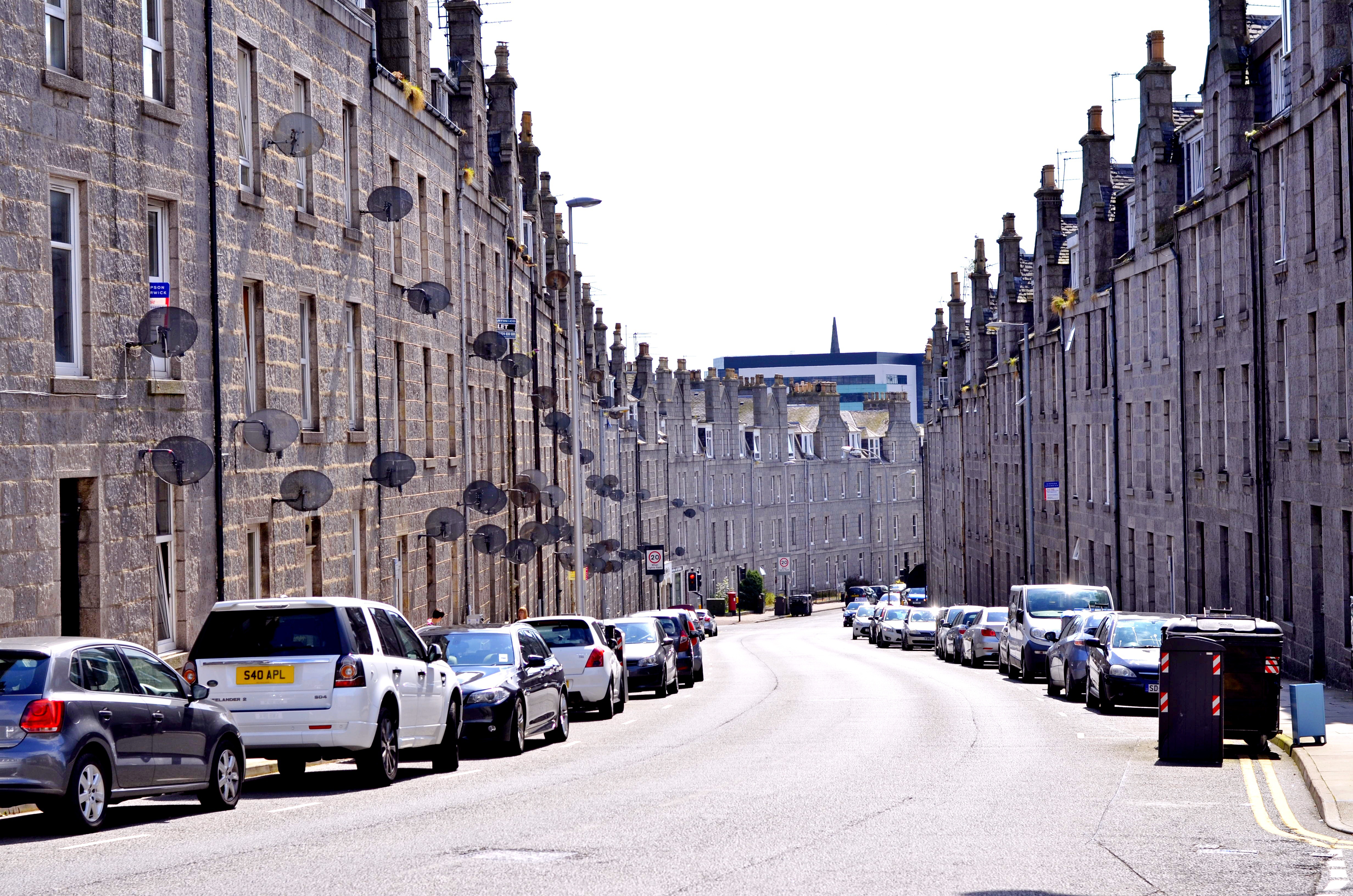
About Lerwick, Shetland Islands
Founded by Dutch fishermen in the 17th century, Lerwick today is a busy town and administrative center. Handsome stone buildings—known as lodberries—line the harbor; they provided loading bays for goods, some of them illegal. The town's twisting flagstone lanes and harbor once heaved with activity, and Lerwick is still an active port today. This is also where most visitors to Shetland dock, spilling out of cruise ships, allowing passengers to walk around the town.
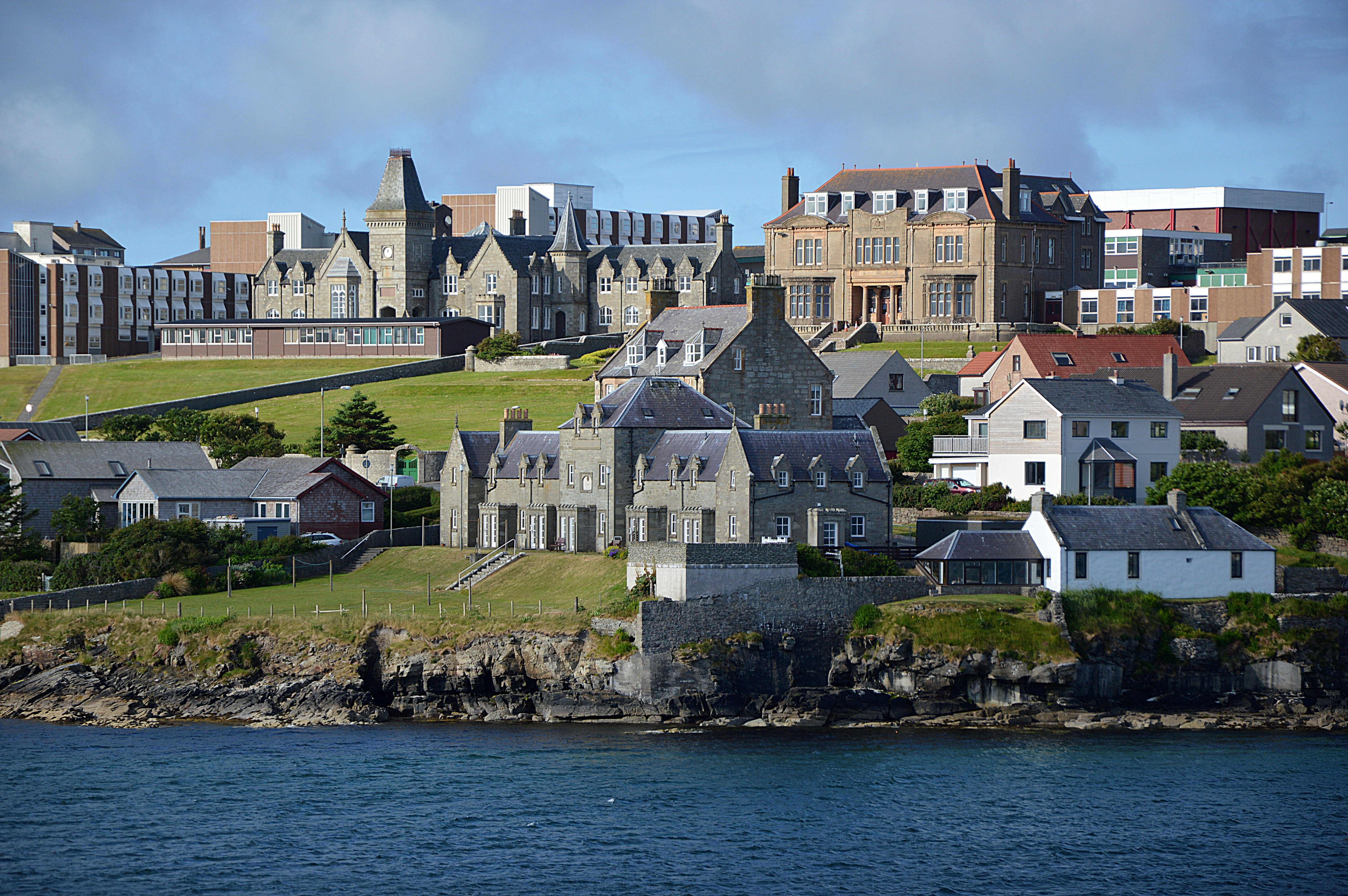

About Bergen
Surrounded by mountains and sparkling fjords, the waterside city of Bergen has a spectacular setting. There has been a settlement here since medieval times and the colourful waterfront buildings of the Hanseatic wharf, known as Bryggen, are testament to its fascinating history of trade. As Norway’s best known medieval settlement, the Bryggen is listed by UNESCO as a World Heritage Site. Our comprehensive selection of excursions allows you to discover the many sides of Bergen, such as the fish market and narrow cobbled streets, as well as stunning views of the city from the summit of Mt Fløyen. Alternatively, those who have visited the city previously may like to experience one of the tours that travel further afield. Just 300 yards from the main piers, you will find the Fortress Museum (Fesningsmuseum), which has an interesting collection of objects related to World War II.
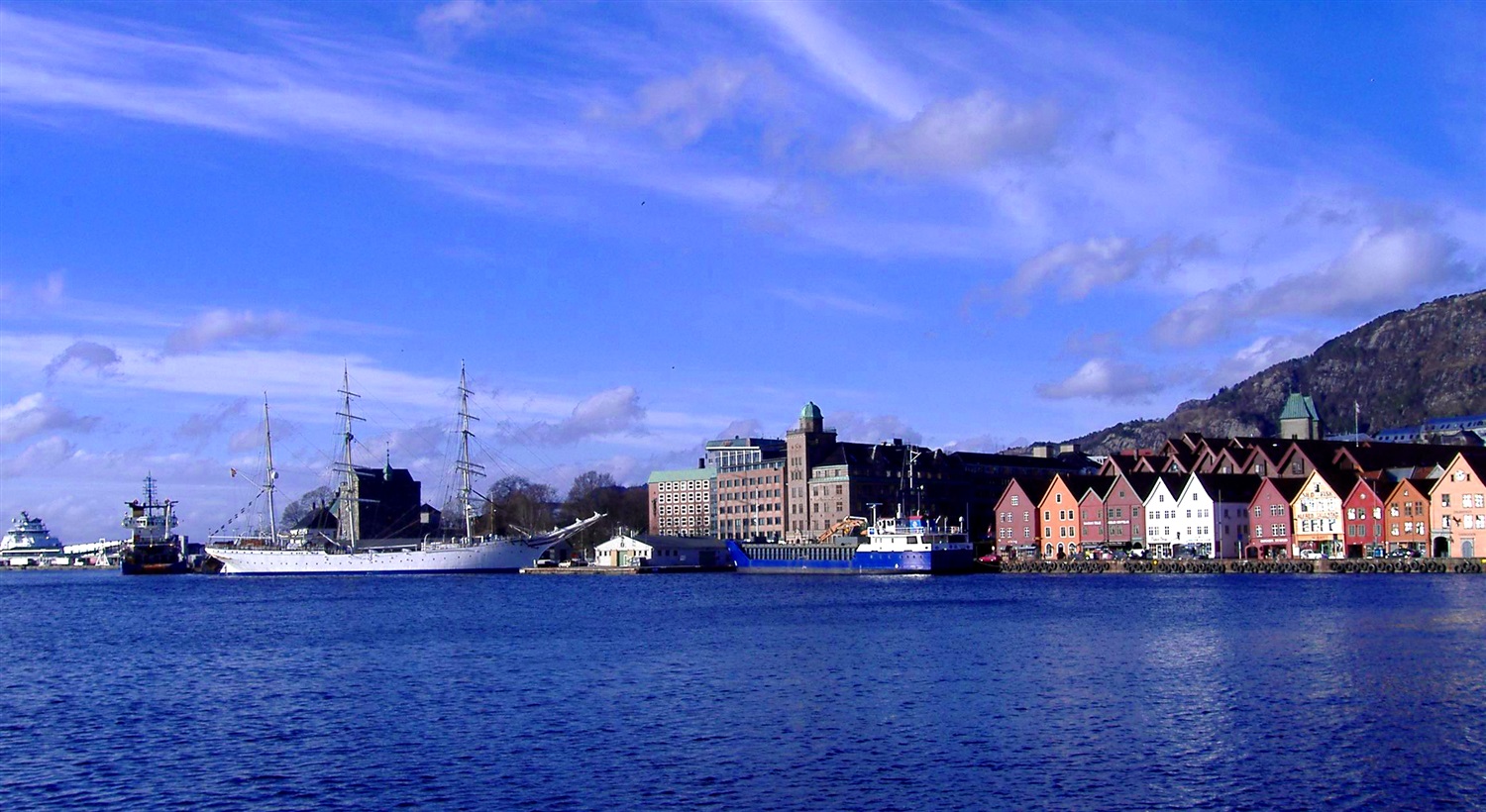
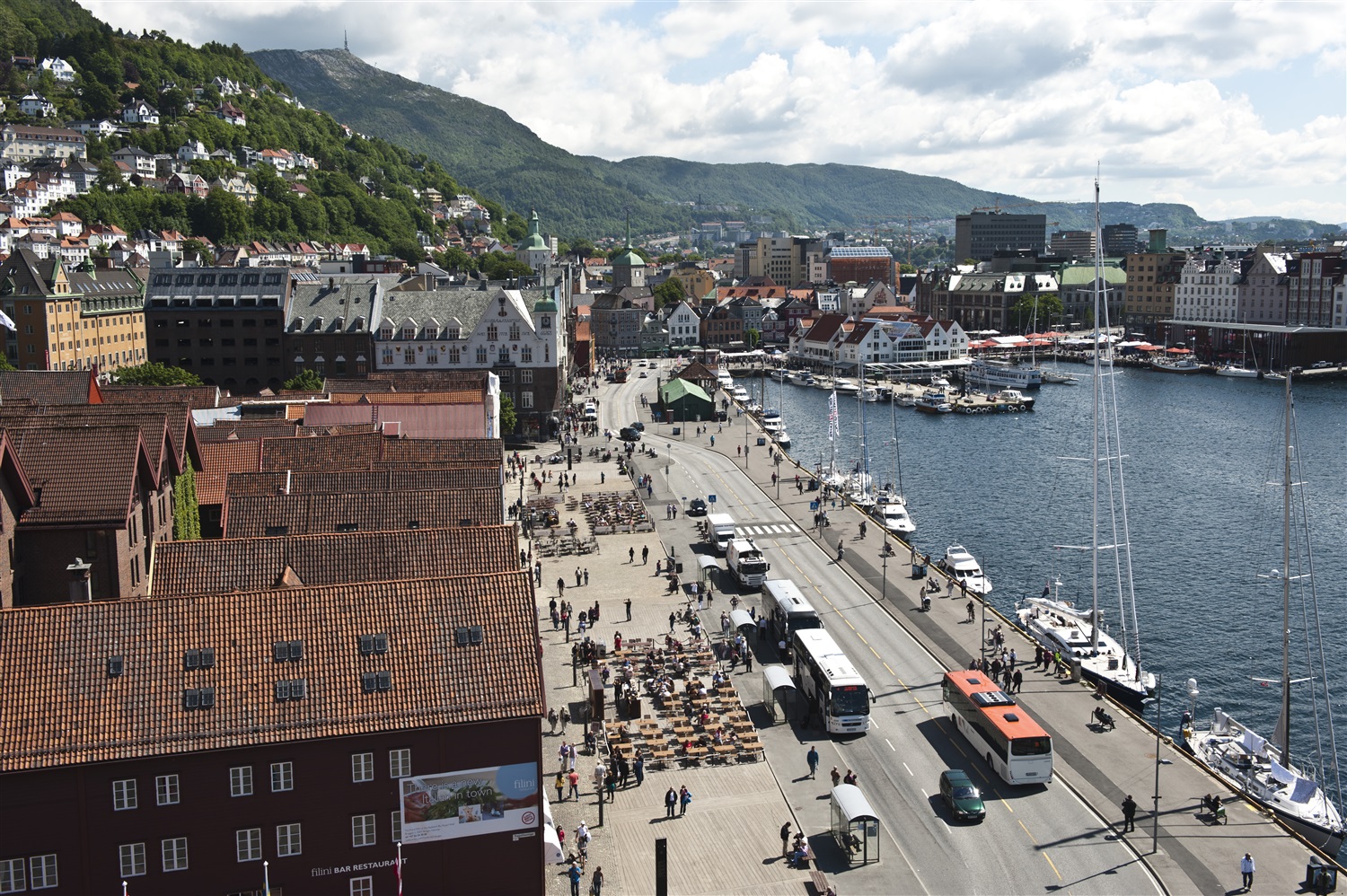
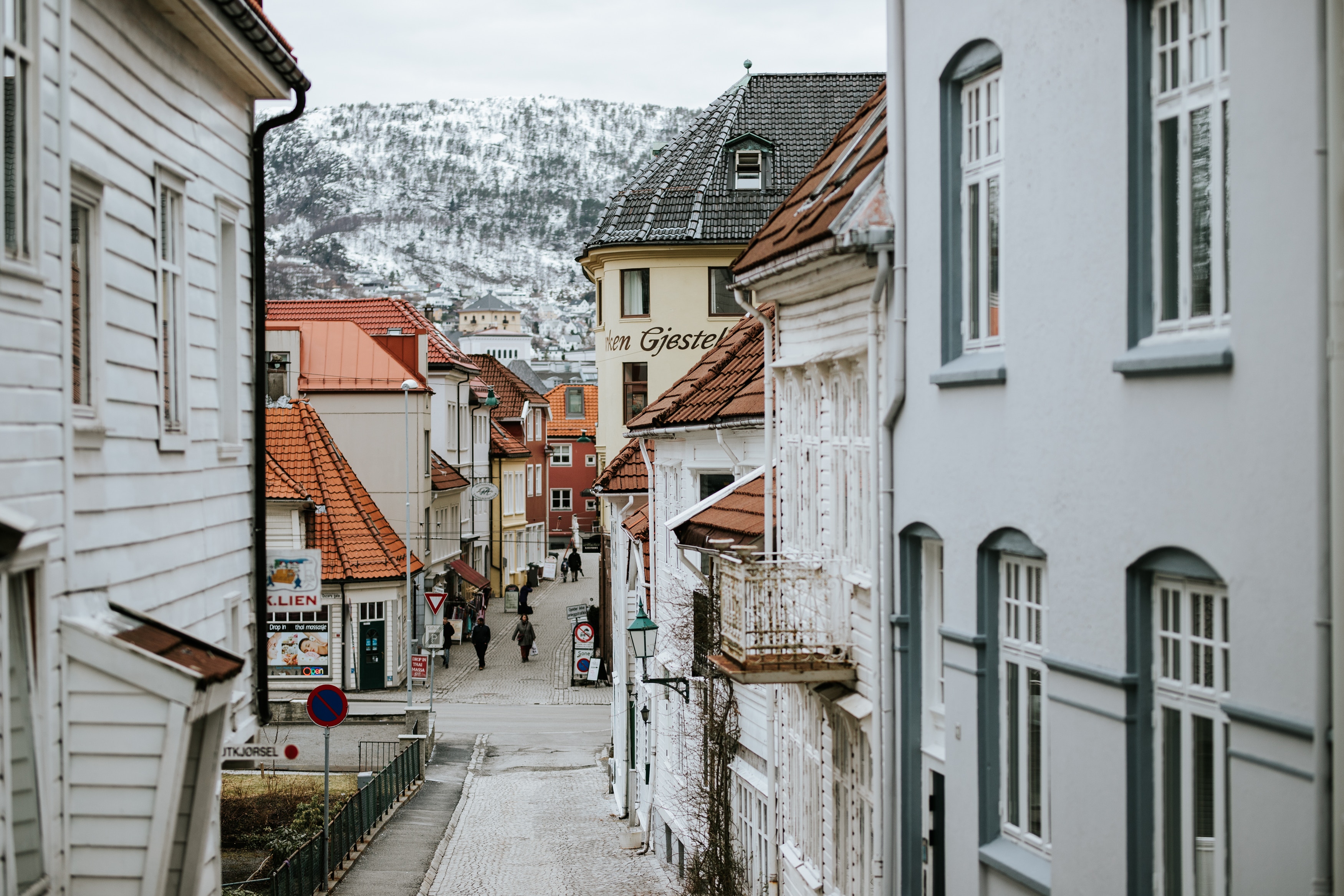
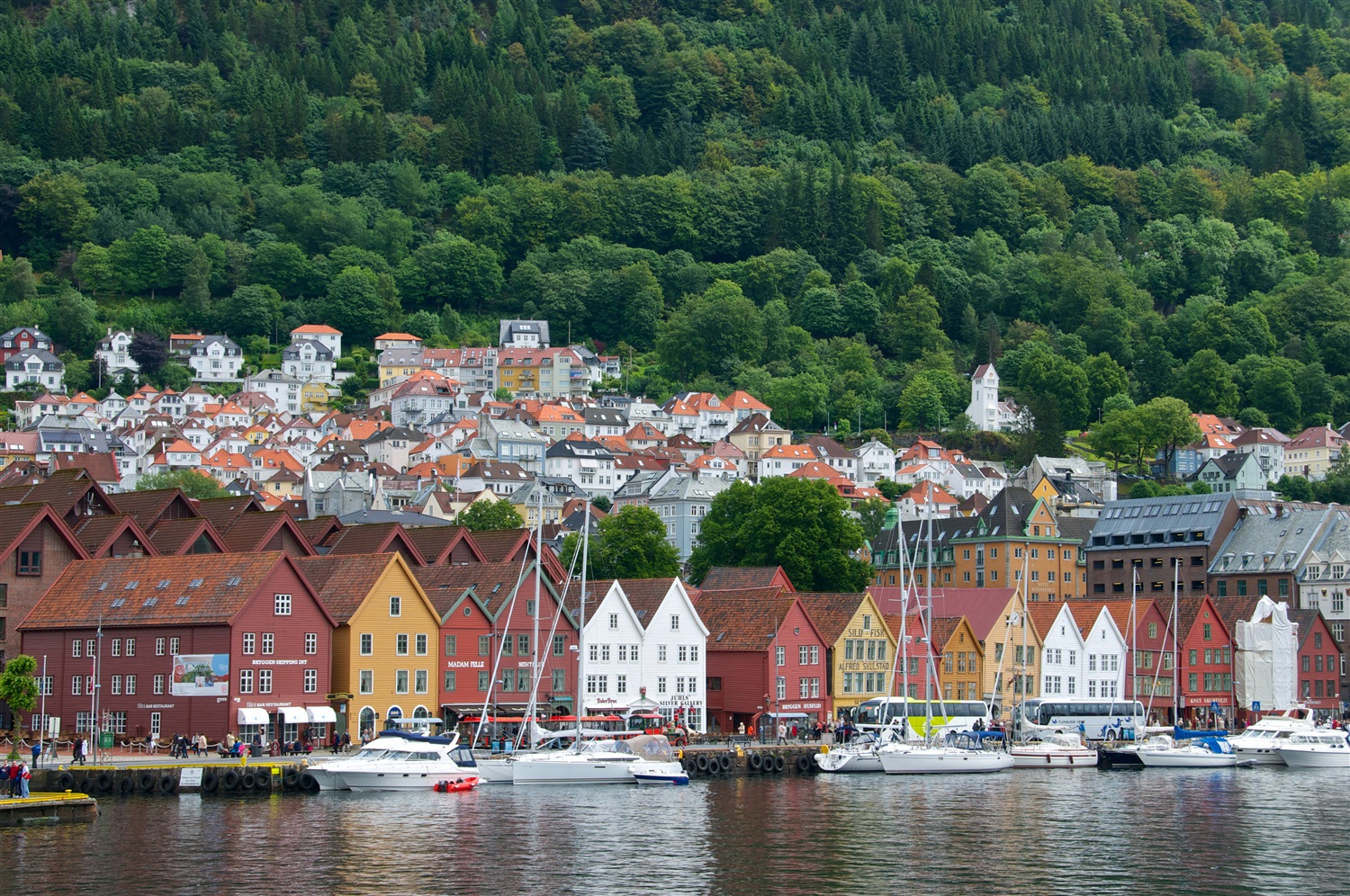
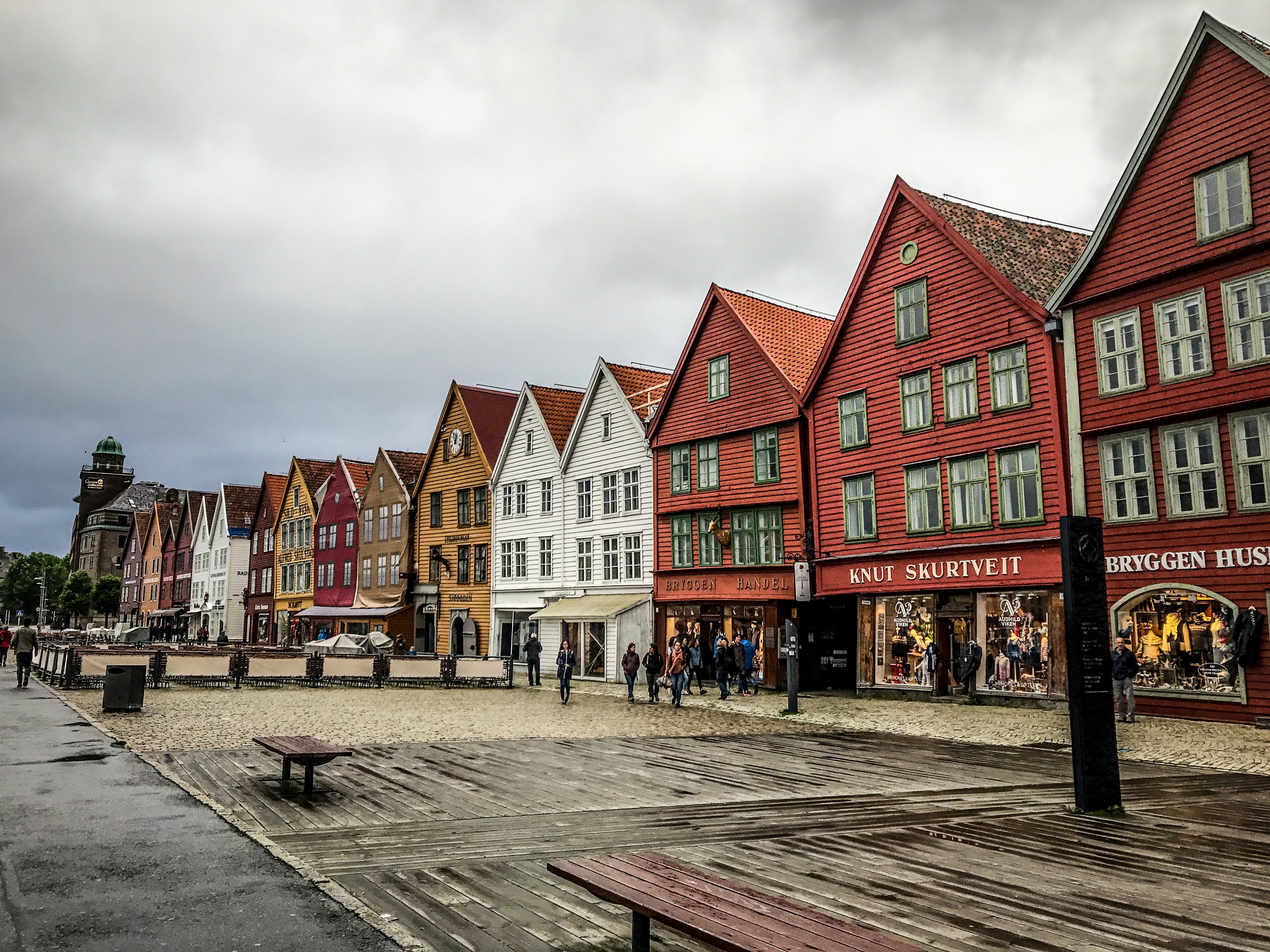
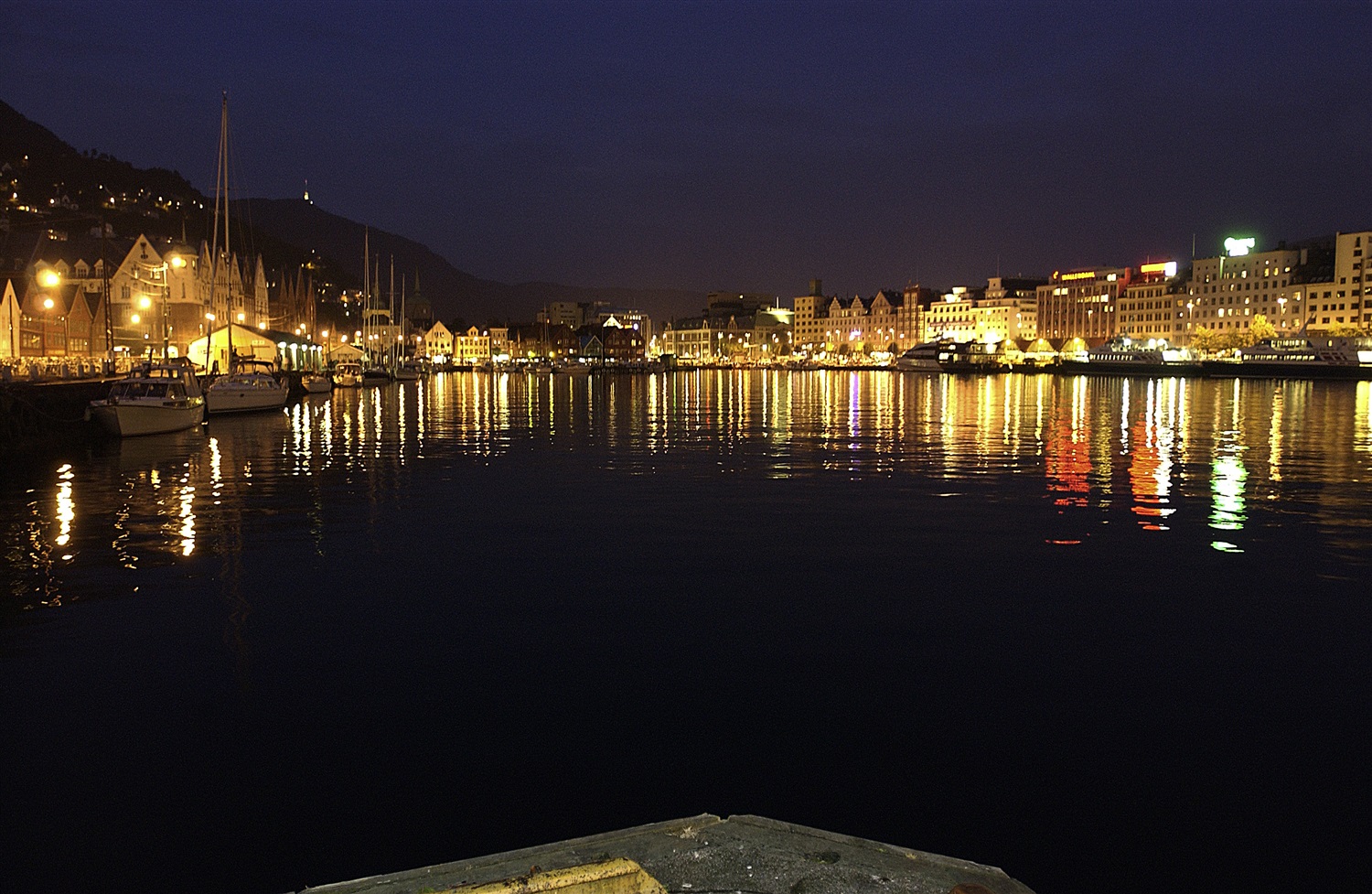
About Bergen
Surrounded by mountains and sparkling fjords, the waterside city of Bergen has a spectacular setting. There has been a settlement here since medieval times and the colourful waterfront buildings of the Hanseatic wharf, known as Bryggen, are testament to its fascinating history of trade. As Norway’s best known medieval settlement, the Bryggen is listed by UNESCO as a World Heritage Site. Our comprehensive selection of excursions allows you to discover the many sides of Bergen, such as the fish market and narrow cobbled streets, as well as stunning views of the city from the summit of Mt Fløyen. Alternatively, those who have visited the city previously may like to experience one of the tours that travel further afield. Just 300 yards from the main piers, you will find the Fortress Museum (Fesningsmuseum), which has an interesting collection of objects related to World War II.






About Flåm
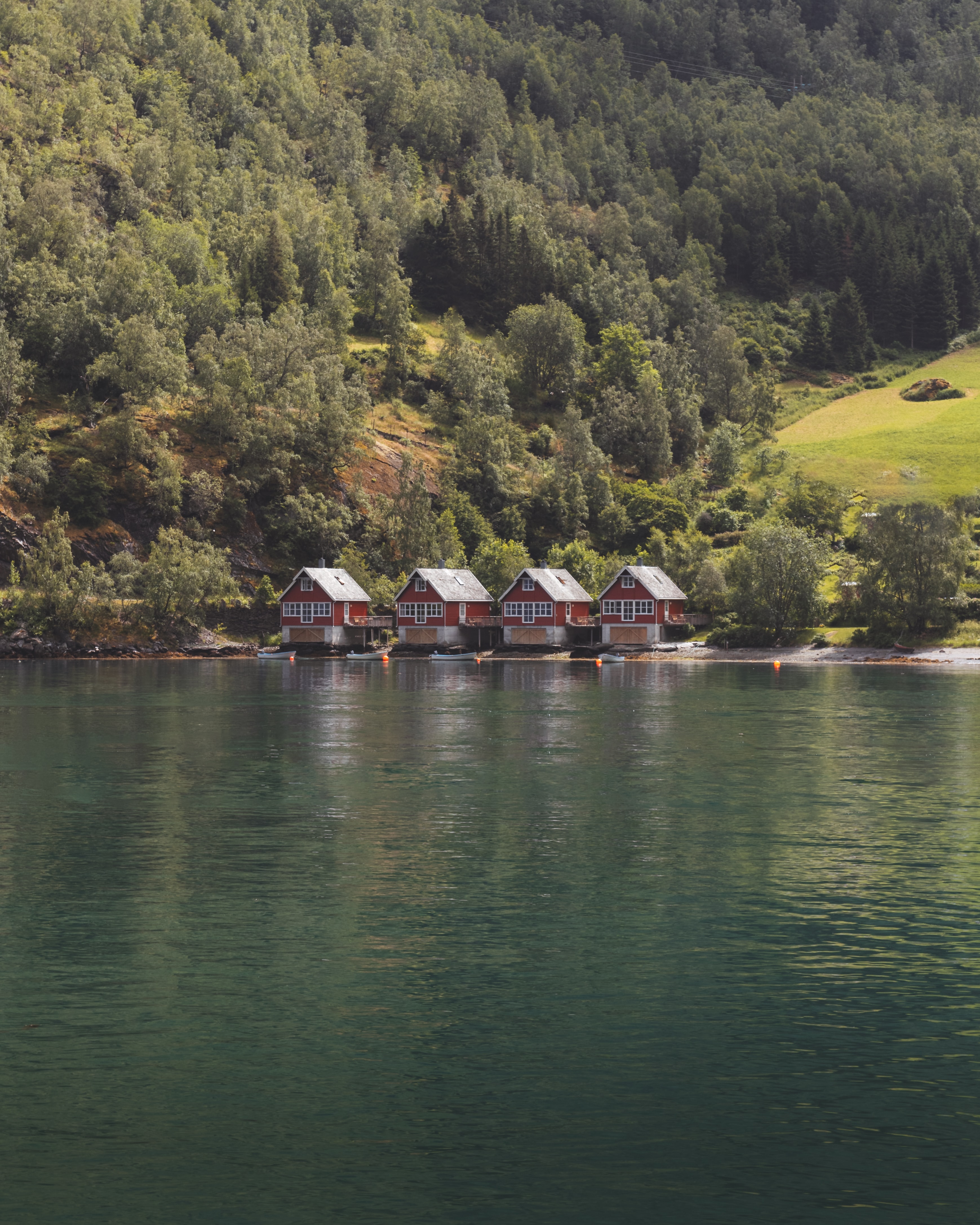
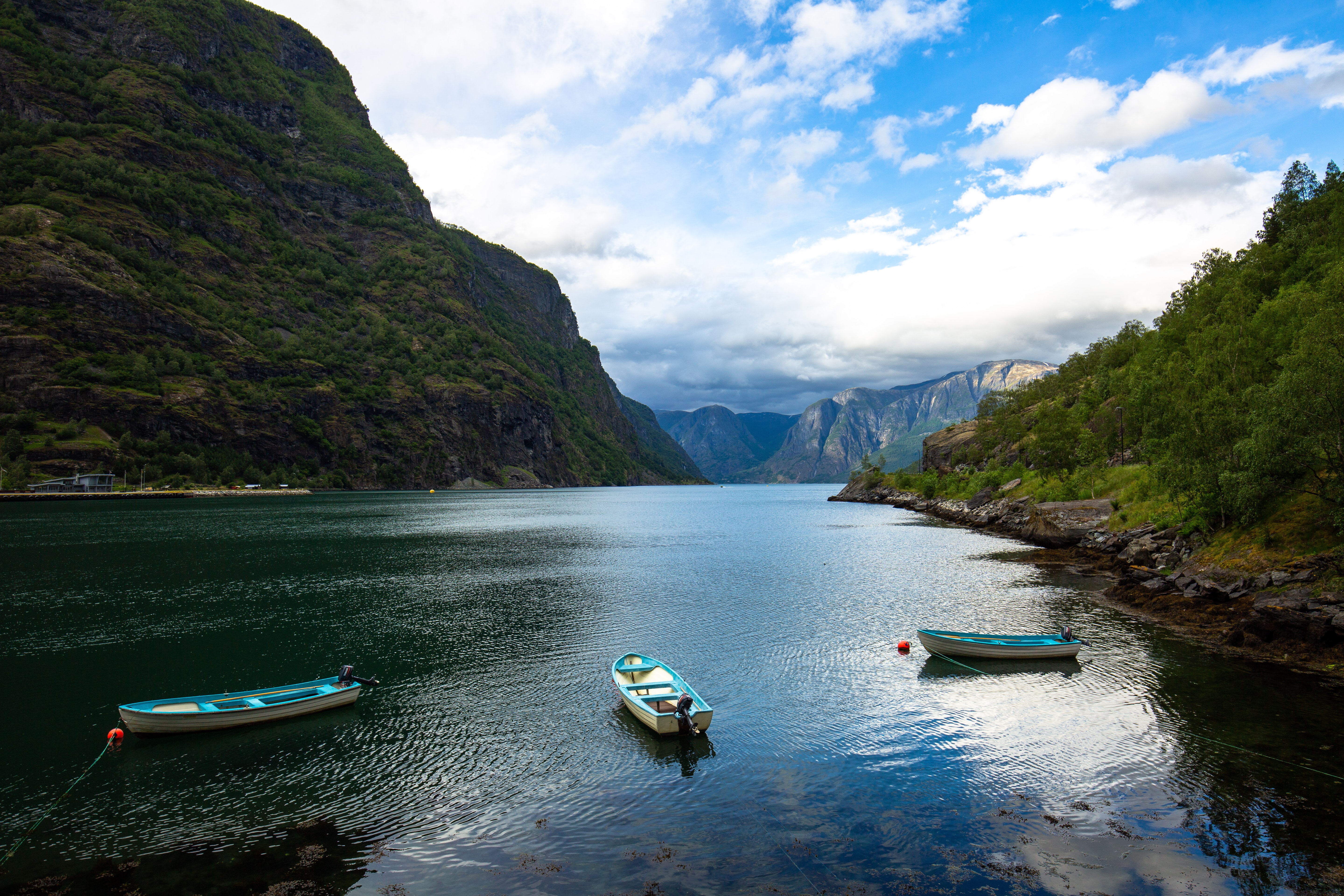
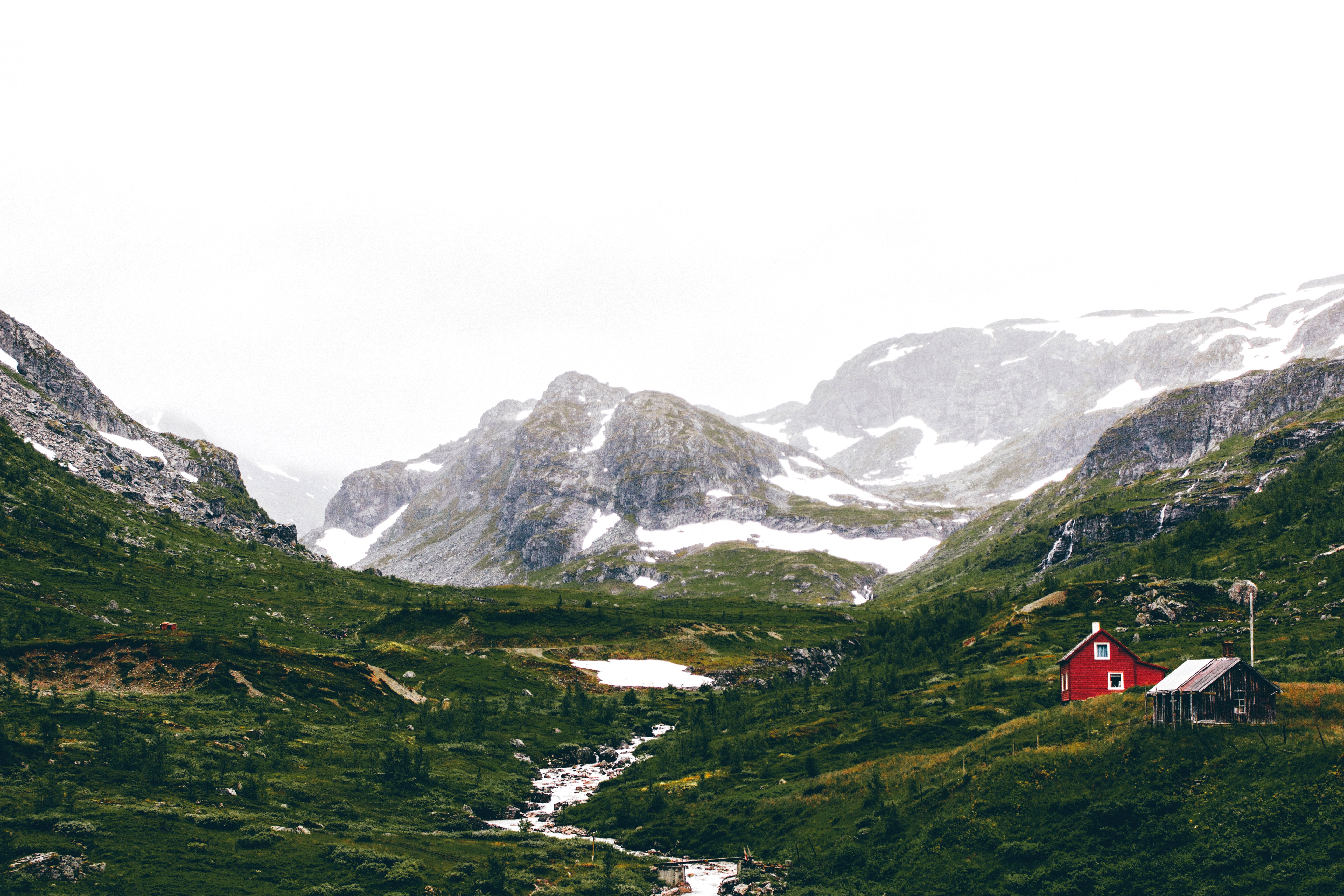

About Stavanger
Overlooking the Atlantic Ocean, Stavanger flourished in the 19th century as a fishing port. While other towns in Norway have suffered with the decline of this industry, Stavanger has kept its economy booming by diversifying, first into shipbuilding and now into oil. These two contrasting industries have created a city of two halves – a modern area of high-rise buildings and a historic centre with cobbled streets and old wooden houses. The city centre was the birthplace of Alexander Kielland, one of the great 19th-century Norwegian novelists. Stavanger Cathedral, dating from 1125, is an impressive building and the only medieval cathedral in Norway that has not been substantially altered since it was first built. From Stavanger you can explore the attractive blue waters of Lysefjord, surrounded by cliffs and striking rock formations, and also visit Hafrsfjord where the Viking King Harald won an important battle that started the Unification of Norway. Those preferring to explore on their own may wish to visit the interesting Petroleum Museum.
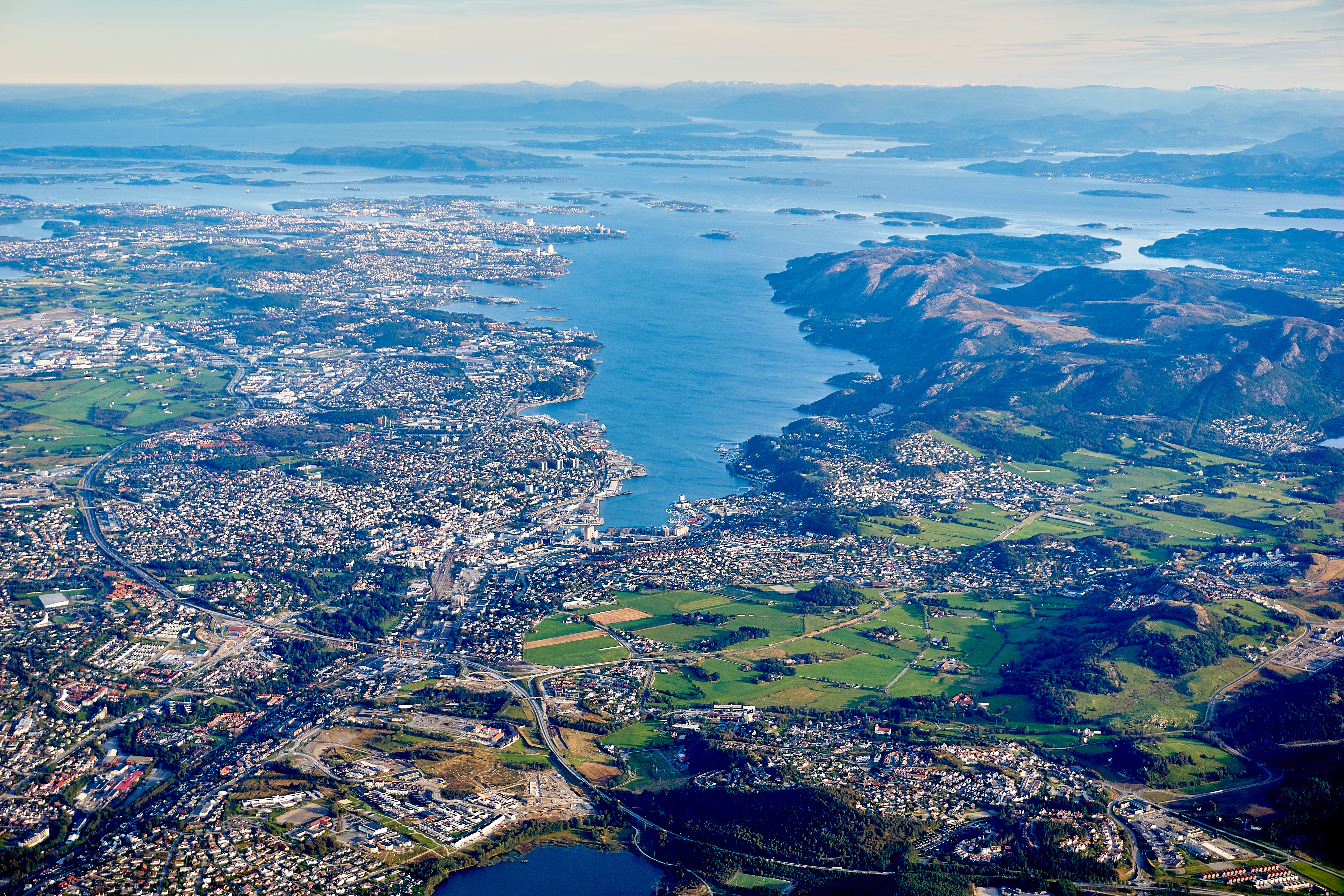
About Kristiansand
Nicknamed "Sommerbyen" ("Summer City"), Norway's fifth-largest city has 78,000 inhabitants. Norwegians come here for its sun-soaked beaches and beautiful harbor. Kristiansand has also become known internationally for the outdoor Quart Festival, which hosts local and international rock bands every July. According to legend, in 1641 King Christian IV marked the four corners of Kristiansand with his walking stick, and within that framework the grid of wide streets was laid down. The center of town, called the Kvadraturen, still retains the grid, even after numerous fires. In the northeast corner is Posebyen, one of northern Europe's largest collections of low, connected wooden house settlements, and there's a market here every Saturday in summer. Kristiansand's Fisketorvet (fish market) is near the south corner of the town's grid, right on the sea.
About Oslo
Oslo is the capital of Norway and is also its largest city, situated at the head of Oslo Fjord and surrounded by hills and forests. Home to some 50 museums and full of galleries, cafés, a sculpture park and the Royal Palace, this vibrant city with its handsome 19th-century buildings and wide streets has much to offer. Its history dates back 1,000 years, and includes a rich seafaring heritage that ranges from the Viking era to Thor Heyerdahl’s Kon Tiki expedition. Discover more about this exciting city on our varied selection of excursions.
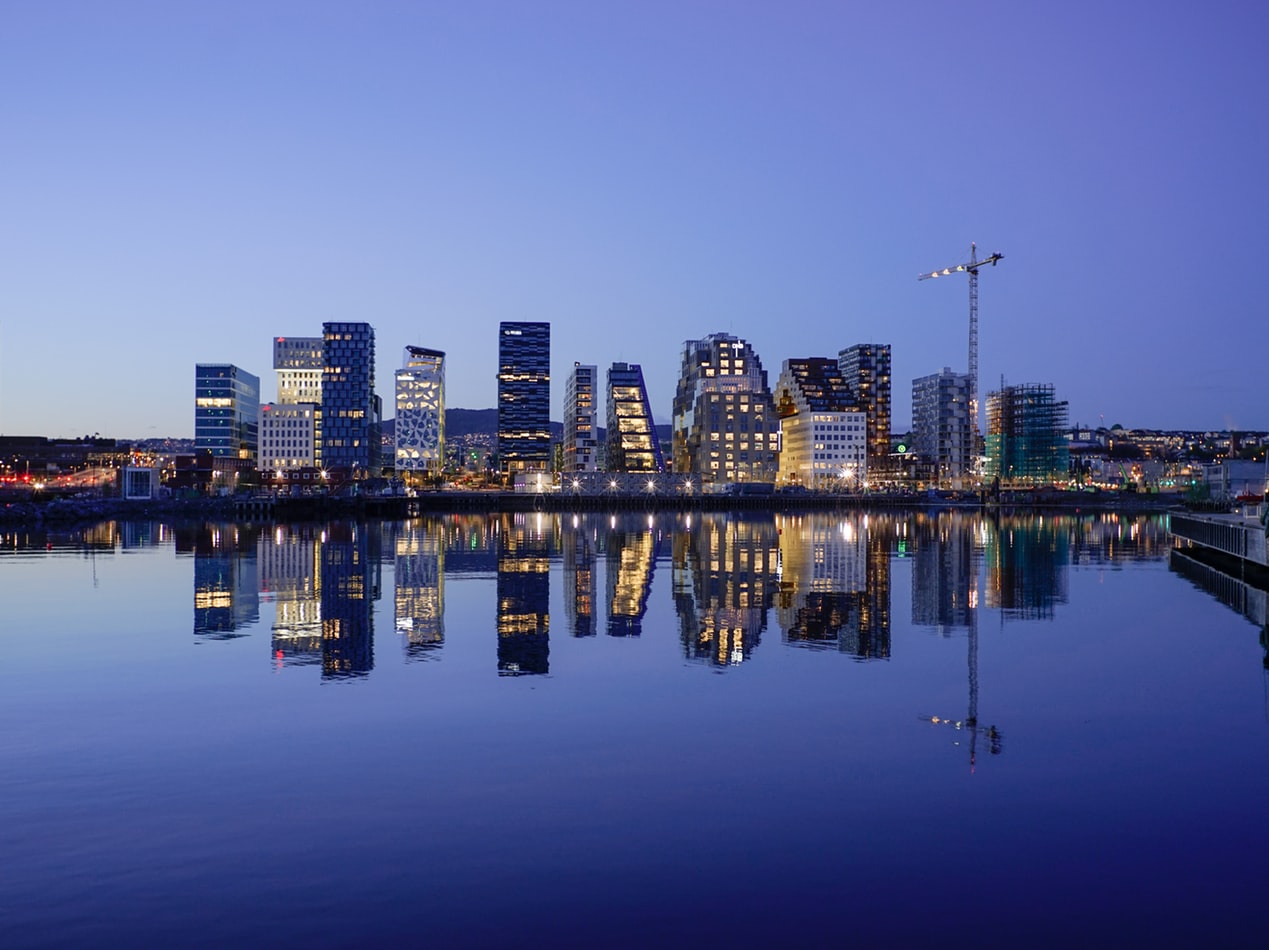
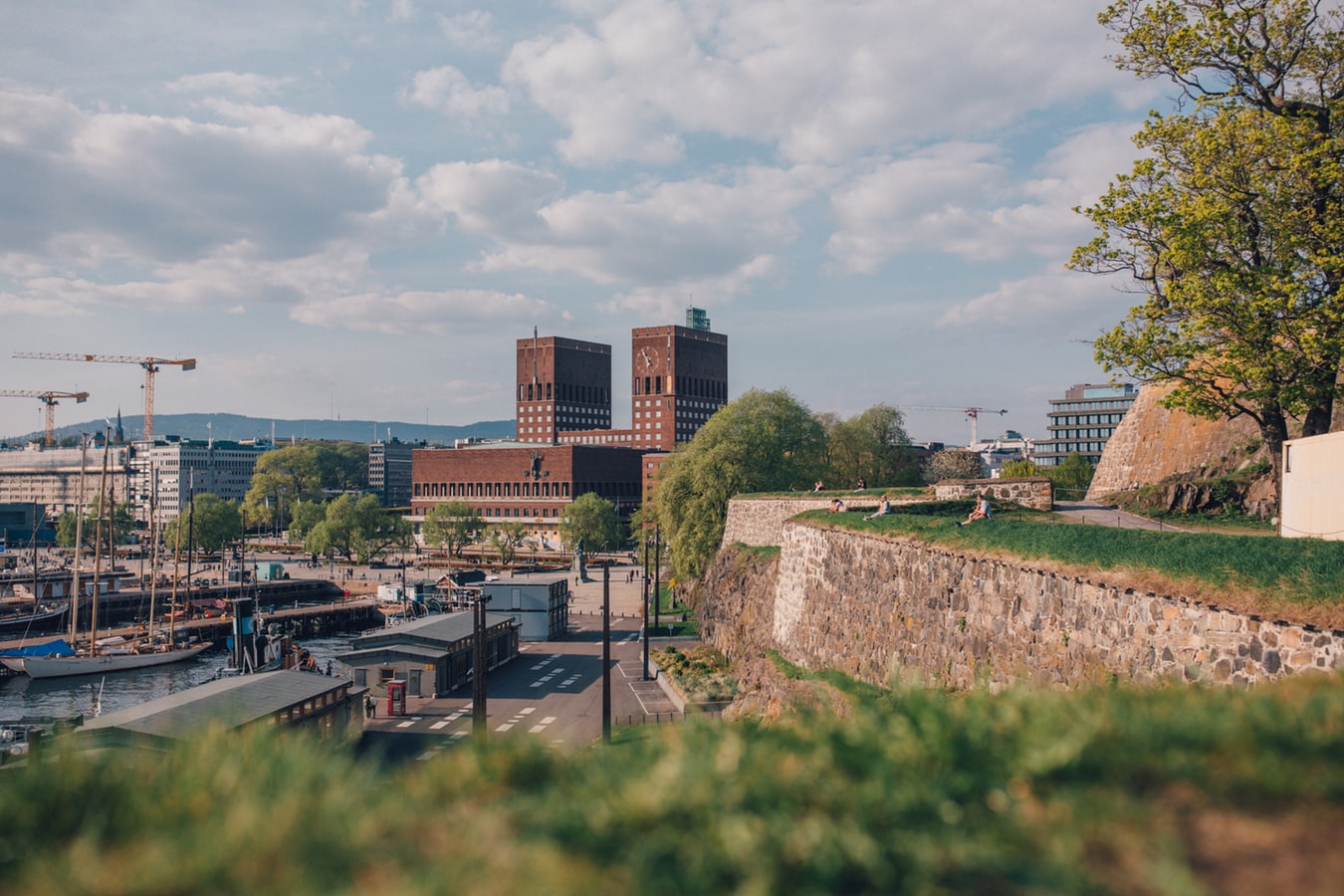

About Skagen
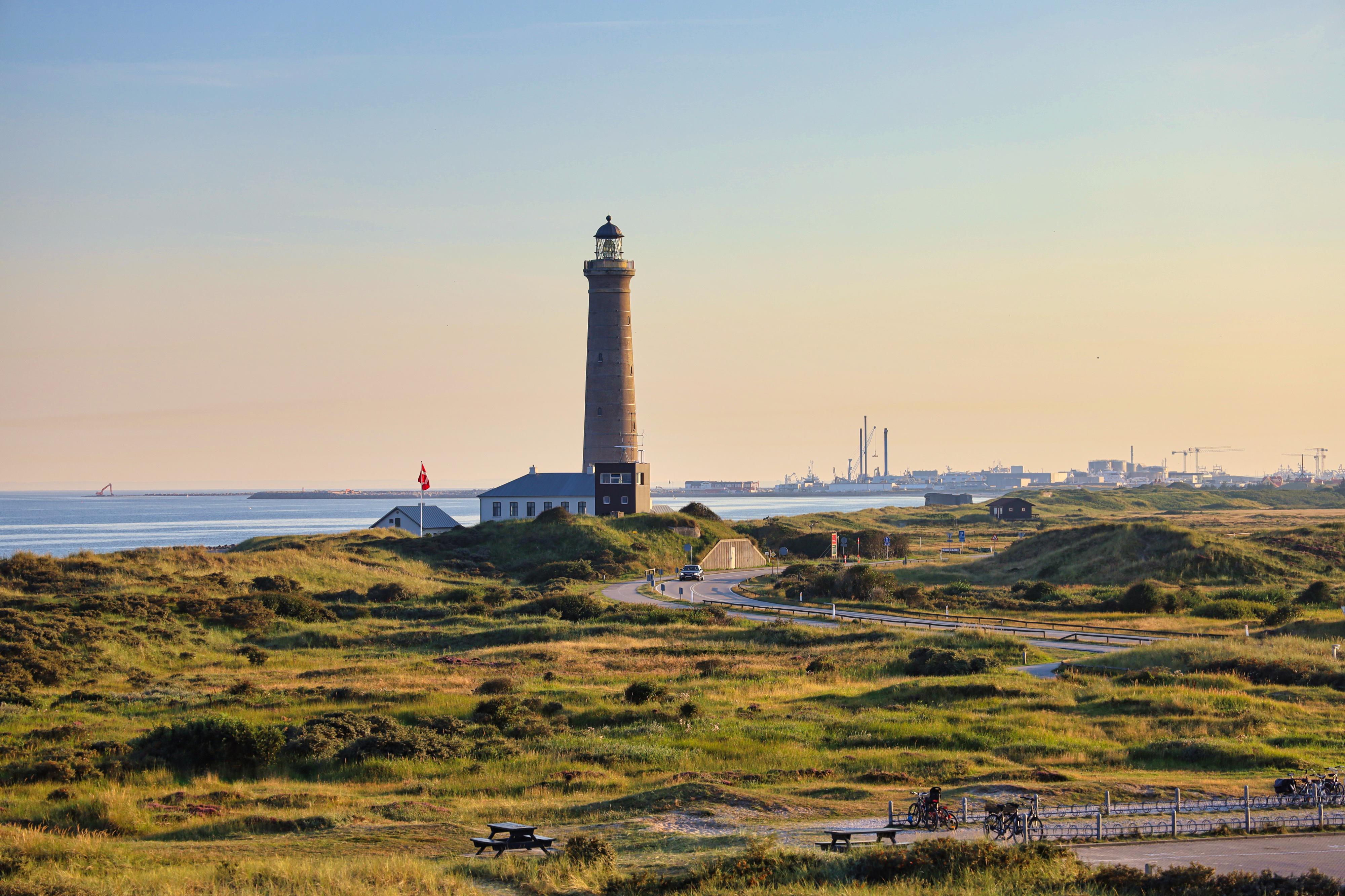
About Amsterdam
Amsterdam combines the unrivaled beauty of the 17th-century Golden Age city center with plenty of museums and art of the highest order, not to mention a remarkably laid-back atmosphere. It all comes together to make this one of the world's most appealing and offbeat metropolises in the world. Built on a latticework of concentric canals like an aquatic rainbow, Amsterdam is known as the City of Canals—but it's no Venice, content to live on moonlight serenades and former glory. Quite the contrary: on nearly every street here you'll find old and new side by side—quiet corners where time seems to be holding its breath next to streets like neon-lit Kalverstraat, and Red Light ladies strutting by the city's oldest church. Indeed, Amsterdam has as many lovely facets as a 40-carat diamond polished by one of the city's gem cutters. It's certainly a metropolis, but a rather small and very accessible one. Locals tend to refer to it as a big village, albeit one that happens to pack the cultural wallop of a major world destination. There are scores of concerts every day, numerous museums, summertime festivals, and, of course, a legendary year-round party scene. It's pretty much impossible to resist Amsterdam's charms. With 7,000 registered monuments, most of which began as the residences and warehouses of humble merchants, set on 160 man-made canals, and traversed by 1,500 or so bridges, Amsterdam has the largest historical inner city in Europe. Its famous circle of waterways, the grachtengordel, was a 17th-century urban expansion plan for the rich and is a lasting testament to the city’s Golden Age. This town is endearing because of its kinder, gentler nature—but a reputation for championing sex, drugs, and rock ’n’ roll does not alone account for Amsterdam's being one of the most popular destinations in Europe: consider that within a single square mile the city harbors some of the greatest achievements in Western art, from Rembrandt to Van Gogh. Not to mention that this is one of Europe's great walking cities, with so many of its treasures in the untouted details: tiny alleyways barely visible on the map, hidden garden courtyards, shop windows, floating houseboats, hidden hofjes(courtyards with almshouses), sudden vistas of church spires, and gabled roofs that look like so many unframed paintings. And don’t forget that the joy lies in details: elaborate gables and witty gable stones denoting the trade of a previous owner. Keep in mind that those XXX symbols you see all over town are not a mark of the city's triple-X reputation. They're part of Amsterdam's official coat of arms—three St. Andrew's crosses, believed to represent the three dangers that have traditionally plagued the city: flood, fire, and pestilence. The coat's motto ("Valiant, determined, compassionate") was introduced in 1947 by Queen Wilhelmina in remembrance of the 1941 February Strike in Amsterdam—the first time in Europe that non-Jewish people protested against the persecution of Jews by the Nazi regime.
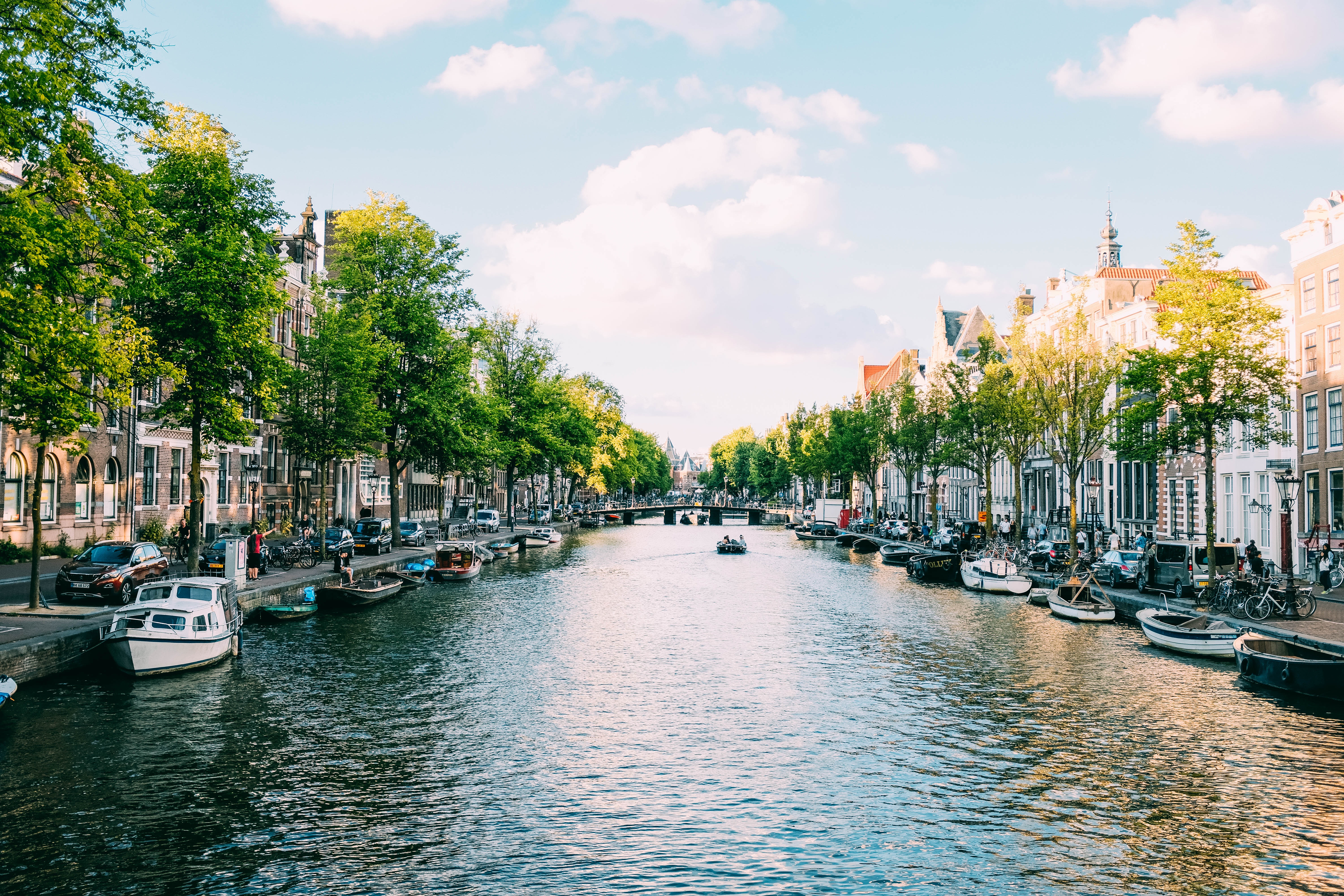

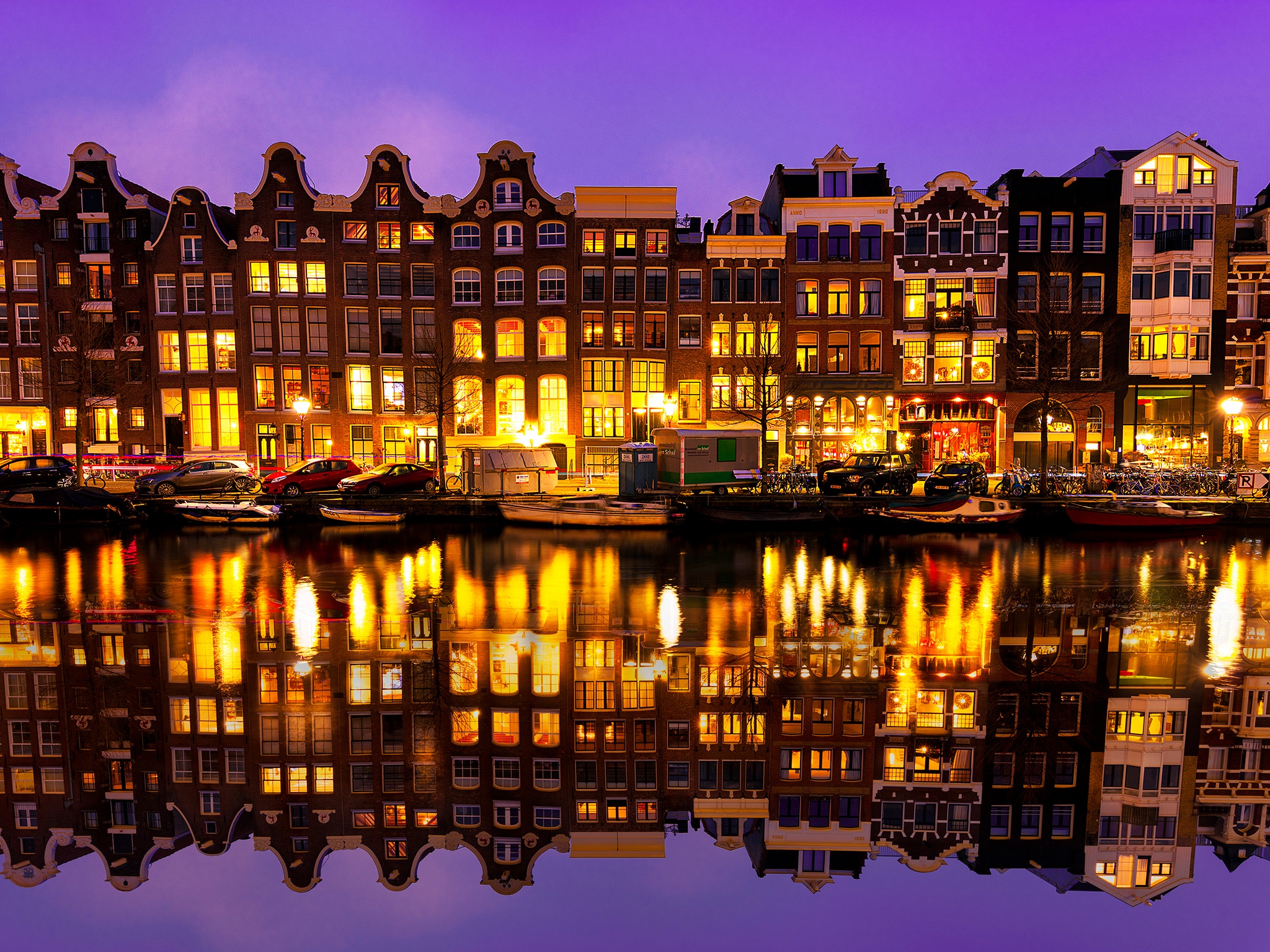
Features
- Stateroom size: 1,488 sq ft multi-room suite including expansive private veranda
- Ocean-view largest multi-room accommodations onboard
- Separate bedroom suite
- Spacious, well-appointed living room
- Separate dining area that seats 6
- Private library, wine & music collections curated by Chairman Torstein Hagen
- Ocean-view dry sauna
- Boardroom that seats 12 for meetings & catered dinner parties, with first oceangoing vapor-light fireplace
- Pantry for room service & hosted events
- 11 AM Embarkation
- 11 AM priority stateroom access
- First priority shore excursion booking 107 days prior to departure
- Complimentary shore excursion with private car & driver (up to 4 guests) in port city of your choice (valued at up to $800)
- 4 priority reservations at each alternative restaurant 100 days prior to departure
- First priority spa treatment bookings 100 days prior to departure
- King-size Viking Explorer Bed with luxury linens & pillows
- Free Wi-Fi (connection speed may vary)
- 42" flat-screen TV featuring MSNBC, FOX News, National Geographic and more
- Two additional 42" flat-screen interactive LCD TVs in living area and boardroom
- 110/220 volt outlets & USB ports
- Large master bathroom with spacious glass-enclosed shower, double-sink vanity, heated floor, anti-fog mirror & hair dryer, plus two guest bathrooms
- Premium Freyja® toiletries
- Plush robes & slippers
- Direct-dial satellite phone & cell service
- Security safe
- Individual climate control
- Purified water refilled daily
- Welcome bottle of Veuve Clicquot champagne
- Mini-bar with alcoholic beverages, soft drinks, water & premium snacks (replenished once daily)
- Binoculars
- Traditional Norwegian Marius-weave blanket
- Personal coffee machine with premium coffee & tea selections
- Stateroom steward & twice-daily housekeeping
- 24-hour room service, including service from any restaurant during open hours
- Daily personalized tea or pre-dinner cocktail & canapés on request
- Dinner & guided tour with ship officers (subject to availability)
- Complimentary laundry, dry cleaning, pressing & shoe shine services
- Under-bed suitcase storage space
- Spacious walk-in closet with wooden hangers & drawers
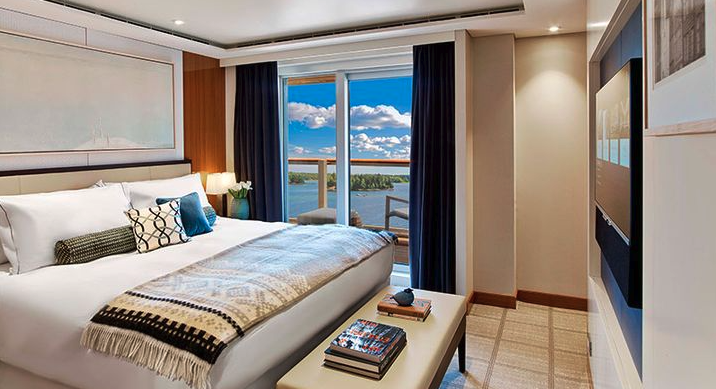
Features
- Stateroom size: 808–1,215 sq ft (includes private veranda)
- Ocean-view two-room suite with floor-to-ceiling sliding glass door opening to a generous veranda (layout varies)
- Well-appointed living area & dining area that seats 4
- 11 AM Embarkation
- 11 AM priority stateroom access
- Priority shore excursion reservations 97 days prior to departure
- 3 priority reservations at each alternative restaurant 90 days prior to departure
- Priority spa treatment bookings 90 days prior to departure
- King-size Viking Explorer Bed (optional twin-bed configuration) with luxury linens & pillows
- Free Wi-Fi (connection speed may vary)
- 42" flat-screen TV featuring MSNBC, FOX News, National Geographic and more
- Additional 42" flat-screen interactive LCD TVs in living area
- 110/220 volt outlets & USB ports
- Large private bathroom with spacious glass-enclosed shower, bathtub, double-sink vanity, heated floor, anti-fog mirror & hair dryer
- Premium Freyja® toiletries
- Plush robes & slippers
- Direct-dial satellite phone & cell service
- Security safe
- Individual climate control
- Purified water refilled daily
- Welcome bottle of champagne
- Mini-bar with alcoholic beverages, soft drinks, water & snacks (replenished once daily)
- Binoculars
- Traditional Norwegian Marius-weave blanket
- Personal coffee machine with premium coffee & tea selections
- Stateroom steward & twice-daily housekeeping
- 24-hour room service
- Complimentary laundry, dry cleaning, pressing & shoe shine services
- Under-bed suitcase storage space
- Spacious drawers & closet with wooden hangers
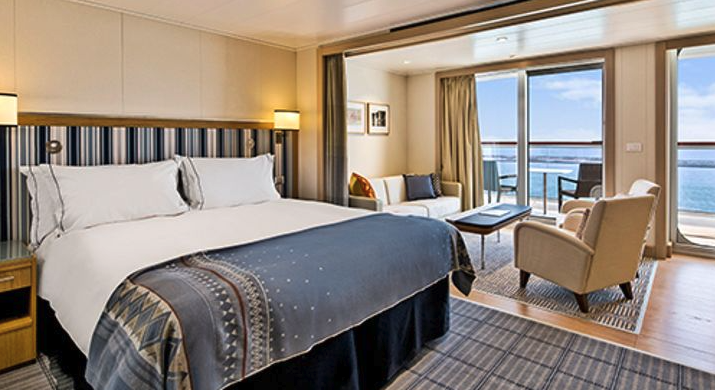
Features
- Stateroom size: 432 sq ft (includes private veranda)
- Ocean-view suite with floor-to-ceiling sliding glass door opening to a full-size veranda
- Wheelchair Accessible (#6020, #6021)
- 11 AM Embarkation
- 11 AM priority stateroom access
- Priority shore excursion reservations 87 days prior to departure
- 3 priority reservations at each alternative restaurant 80 days prior to departure
- Priority spa treatment bookings 80 days prior to departure
- King-size Viking Explorer Bed (optional twin-bed configuration) with luxury linens & pillows
- Free Wi-Fi (connection speed may vary)
- 42" flat-screen TV featuring MSNBC, FOX News, National Geographic and more
- Additional 42" flat-screen interactive LCD TVs in sitting area
- 110/220 volt outlets & USB ports
- Large private bathroom with spacious glass-enclosed shower, double-sink vanity, heated floor, anti-fog mirror & hair dryer
- Premium Freyja® toiletries
- Plush robes & slippers
- Direct-dial satellite phone & cell service
- Security safe
- Individual climate control
- Purified water refilled daily
- Welcome bottle of champagne
- Mini-bar with alcoholic beverages, soft drinks, water & snacks (replenished once daily)
- Binoculars
- Traditional Norwegian Marius-weave blanket
- Personal coffee machine with premium coffee & tea selections
- Stateroom steward & twice-daily housekeeping
- 24-hour room service
- Complimentary laundry, dry cleaning, pressing & shoe shine services
- Under-bed suitcase storage space
- Spacious drawers & closet with wooden hangers
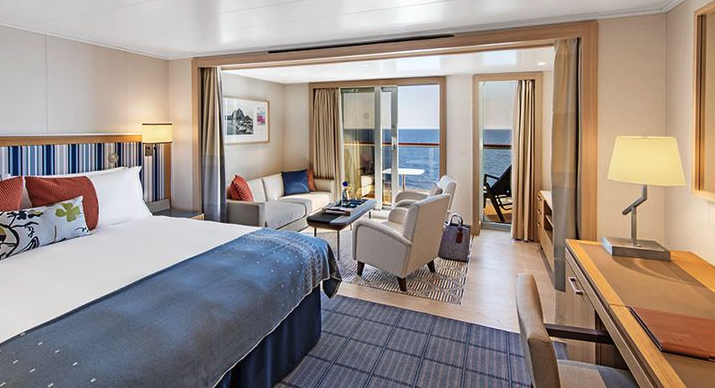
Features
- Stateroom size: 360 sq ft (includes private veranda)
- Ocean-view stateroom with floor-to-ceiling sliding glass door opening to full-size veranda
- 11 AM Embarkation
- 1 PM stateroom access
- Priority shore excursion reservations 77 days prior to departure
- 2 priority reservations at each alternative restaurant 70 days prior to departure
- Priority spa treatment bookings 70 days prior to departure
- King-size Viking Explorer Bed (optional twin-bed configuration) with luxury linens & pillows
- Free Wi-Fi (connection speed may vary)
- 42" flat-screen TV featuring MSNBC, FOX News, National Geographic and more
- 110/220 volt outlets & USB ports
- Large private bathroom with spacious glass-enclosed shower, heated floor, anti-fog mirror & hair dryer
- Premium Freyja® toiletries
- Plush robes & slippers
- Direct-dial satellite phone & cell service
- Security safe
- Individual climate control
- Purified water refilled daily
- Welcome bottle of champagne
- Mini-bar with alcoholic beverages, soft drinks, water & snacks (replenished once daily)
- Binoculars
- Traditional Norwegian Marius-weave blanket
- Personal coffee machine with premium coffee & tea selections
- Stateroom steward & twice-daily housekeeping
- 24-hour room service
- Complimentary pressing & shoe shine services
- Under-bed suitcase storage space
- Spacious drawers & closet with wooden hangers
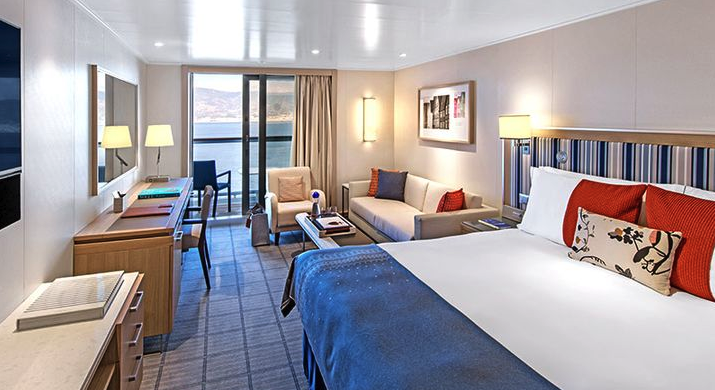
Features
- Stateroom size: 288 sq ft (includes private veranda)
- Ocean-view stateroom with floor-to-ceiling sliding glass door opening to full-size veranda
- 11 AM Embarkation
- 2 PM stateroom access
- Priority shore excursion reservations 67 days prior to departure
- 1 priority reservation at each alternative restaurant 60 days prior to departure
- Priority spa treatment bookings 60 days prior to departure
- King-size Viking Explorer Bed (optional twin-bed configuration) with luxury linens & pillows
- Free Wi-Fi (connection speed may vary)
- 42" flat-screen TV featuring MSNBC, FOX News, National Geographic and more
- 110/220 volt outlets & USB ports
- Large private bathroom with spacious glass-enclosed shower, heated floor, anti-fog mirror & hair dryer
- Premium Freyja® toiletries
- Plush robes & slippers
- Direct-dial satellite phone & cell service
- Security safe
- Individual climate control
- Purified water refilled daily
- Mini-bar with soft drinks, water & snacks (replenished once daily)
- Binoculars
- Traditional Norwegian Marius-weave blanket
- Personal coffee machine with premium coffee & tea selections
- Stateroom steward & twice-daily housekeeping
- 24-hour room service
- Under-bed suitcase storage space
- Spacious drawers & closet with wooden hangers
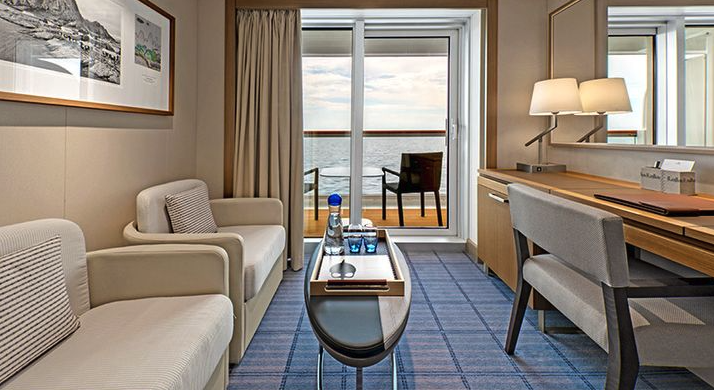
Features
- Stateroom size: 288 sq ft (includes private veranda)
- Ocean-view stateroom with floor-to-ceiling sliding glass door opening to full-size veranda
- 11 AM Embarkation
- 3 PM stateroom access
- Shore excursion reservations 60 days prior to departure
- King-size Viking Explorer Bed (optional twin-bed configuration) with luxury linens & pillows
- Free Wi-Fi (connection speed may vary)
- 42" flat-screen TV featuring MSNBC, FOX News, National Geographic and more
- 110/220 volt outlets & USB ports
- Large private bathroom with spacious glass-enclosed shower, heated floor, anti-fog mirror & hair dryer
- Premium Freyja® toiletries
- Plush robes & slippers
- Direct-dial satellite phone & cell service
- Security safe
- Individual climate control
- Purified water refilled daily
- Mini-bar with soft drinks, water & snacks
- Stateroom steward & twice-daily housekeeping
- 24-hour room service
- Under-bed suitcase storage space
- Spacious drawers & closet with wooden hangers
Viking Vela
Expand your horizons on our award-winning, all-veranda small ship, with just 998 guests, allowing us to dock where larger ships cannot.
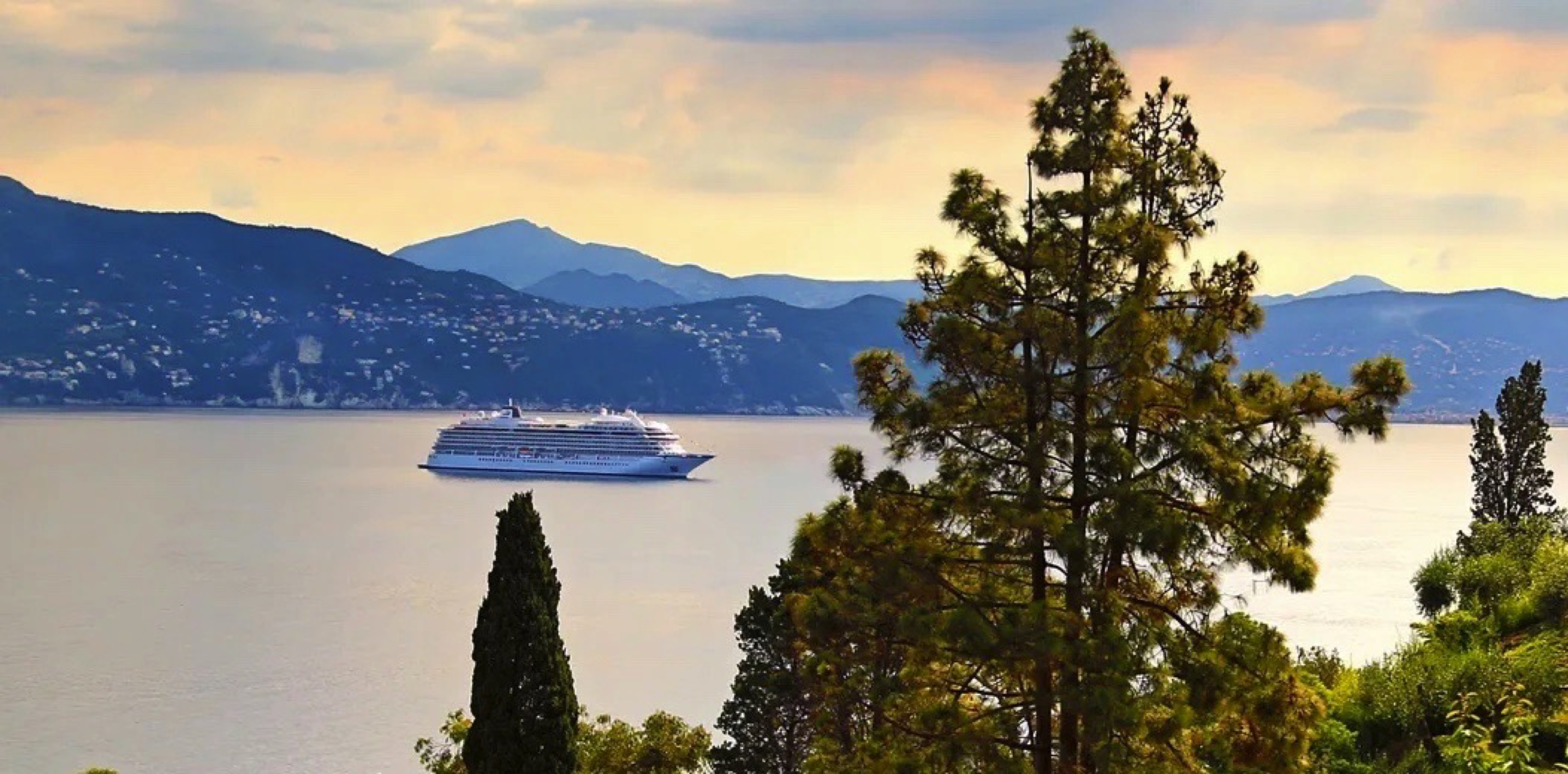
Ship Facts
| Launch Year | 2024 | ||||||||
| Refit Year | |||||||||
| Language | en | ||||||||
| Gross Tonnage | N/A | ||||||||
| Length | 238 | ||||||||
| Width | 30 | ||||||||
| Currency | EUR | ||||||||
| Speed | N/A | ||||||||
| Capacity | 998 | ||||||||
| Crew Count | N/A | ||||||||
| Deck Count | N/A | ||||||||
| Cabin Count | N/A | ||||||||
| Large Cabin Count | N/A | ||||||||
| Wheelchair Cabin Count | N/A | ||||||||
| Electrical Plugs |
|
Deck 9
- Lifts
- Sports Deck

Deck 8
- Lifts
- Retractable Roof
- Explorers' Lounge
- Deluxe Veranda Staterooms
- Penthouse Junior Suites

Deck 7
- Infinity Pool
- Hot Tub
- Aquavit Terrace
- World Cafe
- Pool Grill
- Lifts
- Pool Bar
- Lanai
- Wintergarden
- Main Pool
- Mamsen's
- Explorers' Lounge
- Deluxe Veranda Staterooms
- Penthouse Junior Suites
- Owner's Suite

Deck 6
- Lifts
- Deluxe Veranda Staterooms
- Penthouse Veranda Staterooms
- Explorer Suites
- Penthouse Junior Suites

Deck 5
- Lifts
- Launderette
- Deluxe Veranda Staterooms
- Penthouse Veranda Staterooms
- Explorer Suites

Deck 4
- Launderette
- Lifts
- Deluxe Veranda Staterooms
- Penthouse Veranda Staterooms
- Explorer Suites

Deck 3
- Atrium
- Lifts
- Veranda Staterooms
- Deluxe Veranda Staterooms
- Explorer Suites

Deck 2
- The Restaurant
- Atrium
- Lifts
- Torshavn
- The Nordic Shop
- Shop
- Atrium
- Promenade Deck
- Cinema 1
- Cinema 2
- Bar
- The Theater

Deck 1
- The Kitchen Table
- The Chef's Table
- Manfredi's Italian Restaurant
- Private Dining Room 1
- Private Dining Room 2
- The Living Room
- Guest Services
- Bar
- Lifts
- Shop
- Hair Salon
- Fitness Center
- The Nordic Spa

Deck A
- Lifts
- Medical Center

The Chef's Table
Manfredi's Italian Restaurant
The Restaurant
Our main dining venue, The Restaurant offers the highest onboard dining experience amid a streamlined Scandinavian design. The menu includes regional cuisine and always available classics enhanced with locally sourced ingredients, so you can explore new cultures through food.
Aquavit Terrace
World Café
Mamsen's
The Living Room
The ideal setting for relaxation and conversation, The Living Room draws guests together. Spacious seating, melodic piano tunes, live entertainment and planned activities foster rich camaraderie. And its well-curated Library informs even the best-read traveler. Adorned with nautical touches from Viking days, including the clinker-built bar inspired by ancient longships, it is the most inspired living room at sea.
Bar
Guest Services
Shop
The Atrium
Torshavn®
A lively music venue reminiscent of romantic jazz lounges of 1940s Hollywood, Torshaven is ideal for pre-dinner drinks and after-dinner entertainment.
Enjoy a classic martini, stirred to perfection; savor the finest quality Armagnac; take in the melodic tunes of jazz singers or piano players. All in an intimate setting that invites music lovers to linger. This hidden gem is designed to deliver delightful surprises, great conversation and impromptu crooning.
The Theater
Our main venue, The Theater, features live performances that bring you closer to the culture of our destinations. Sometimes, the destination we connect you to exists solely in the realm of an otherworldly theatrical journey, as is the case with beautifully themed shows.
We will also pull back the curtains of our destinations with cinema in our two movie theaters, which show first-run films you have not yet seen as well as destination-driven cinema such as Room with A View, Roman Holiday, or Skyfall. And because the intellect also needs to be stimulated, our theaters will always be buzzing with fresh, new insights from our port talks and onboard lectures that feature the history, art, and culture of our destinations. And since we have always promised you will explore the world in comfort, we have banished uncomfortable theater seating in favor of soft and spacious sofa seating.
Wintergarden
Explorers Lounge